Modified Antigen-binding Fab Fragments And Antigen-binding Molecules Comprising The Same
HU; Chih-Yung ; et al.
U.S. patent application number 16/318615 was filed with the patent office on 2019-10-10 for modified antigen-binding fab fragments and antigen-binding molecules comprising the same. This patent application is currently assigned to Development Center for Biotechnology. The applicant listed for this patent is DCB-USA LLC, Development Center for Biotechnology. Invention is credited to Yu-Jung CHEN, Chih-Yung HU, Chao-Yang HUANG, Chien-Tsun KUAN, Chia-Hsiang LO, Hsien-Yu TSAI, Chia-Cheng WU.
| Application Number | 20190309092 16/318615 |
| Document ID | / |
| Family ID | 60996065 |
| Filed Date | 2019-10-10 |



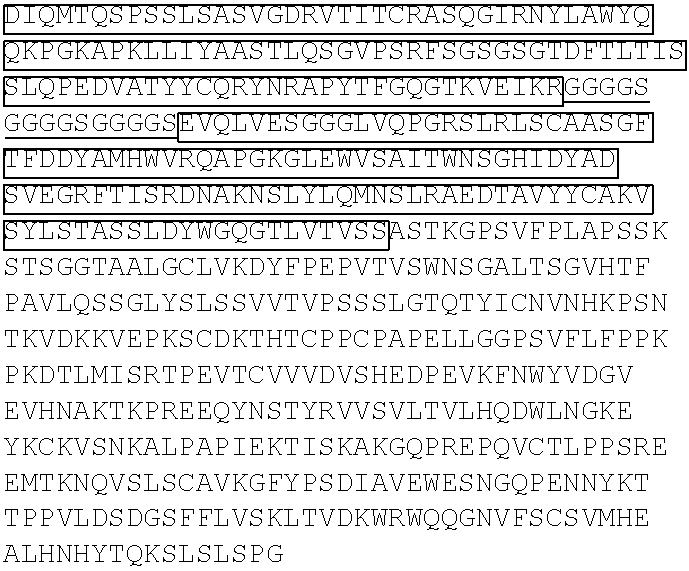

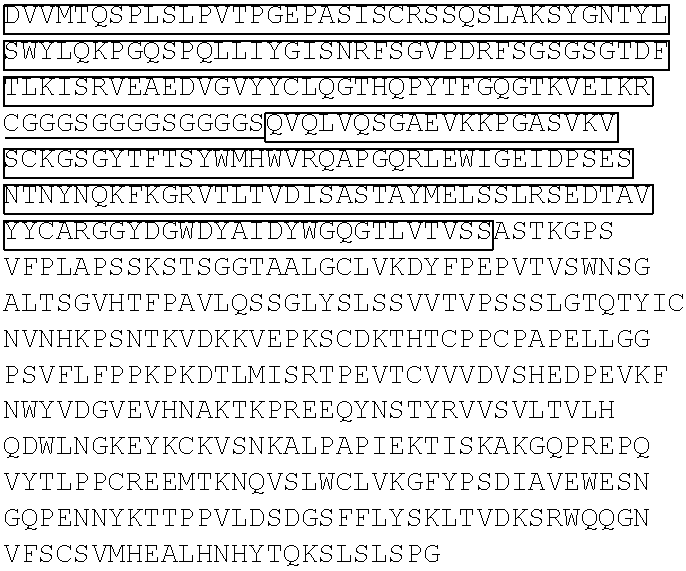

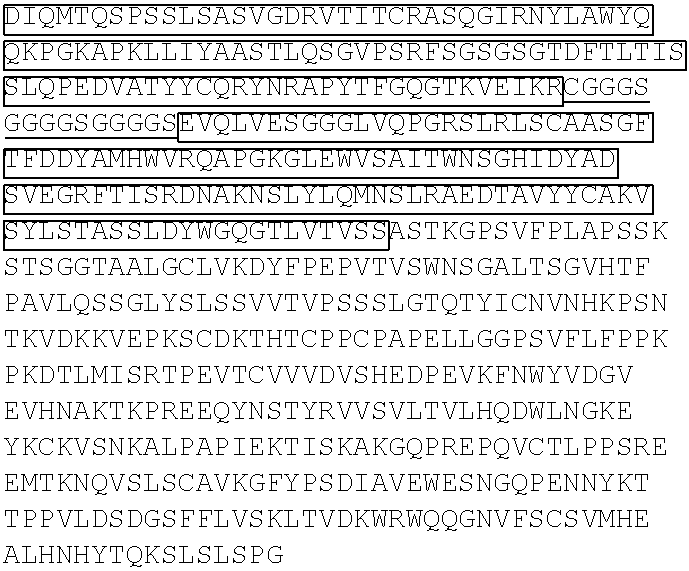

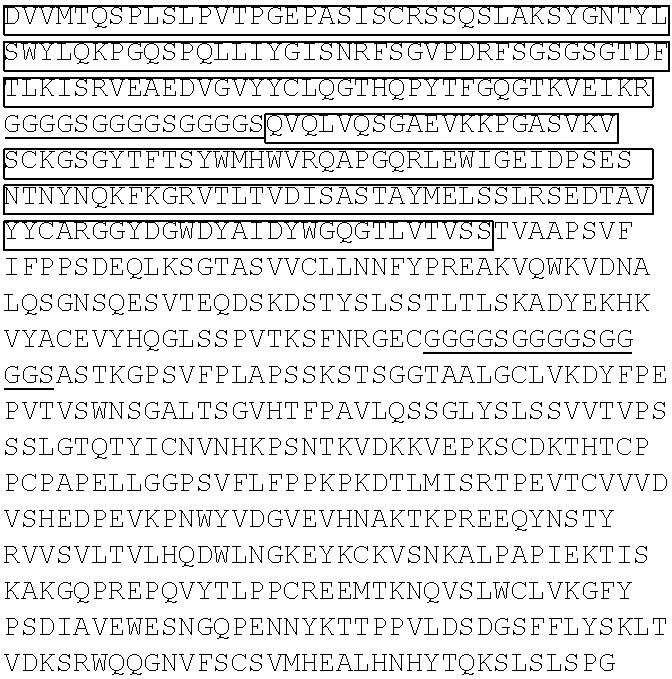


View All Diagrams
| United States Patent Application | 20190309092 |
| Kind Code | A1 |
| HU; Chih-Yung ; et al. | October 10, 2019 |
MODIFIED ANTIGEN-BINDING FAB FRAGMENTS AND ANTIGEN-BINDING MOLECULES COMPRISING THE SAME
Abstract
The present invention provides a modified antigen-binding Fab fragment. An antigen-binding molecule comprising the antigen-binding Fab fragment and a composition comprising the molecule are also provided.
| Inventors: | HU; Chih-Yung; (New Taipei City, TW) ; HUANG; Chao-Yang; (New Taipei City, TW) ; CHEN; Yu-Jung; (New Taipei City, TW) ; WU; Chia-Cheng; (New Taipei City, TW) ; KUAN; Chien-Tsun; (New Taipei City, TW) ; LO; Chia-Hsiang; (New Taipei City, TW) ; TSAI; Hsien-Yu; (New Taipei City, TW) | ||||||||||
| Applicant: |
|
||||||||||
|---|---|---|---|---|---|---|---|---|---|---|---|
| Assignee: | Development Center for
Biotechnology New Taipei City TW |
||||||||||
| Family ID: | 60996065 | ||||||||||
| Appl. No.: | 16/318615 | ||||||||||
| Filed: | July 20, 2017 | ||||||||||
| PCT Filed: | July 20, 2017 | ||||||||||
| PCT NO: | PCT/US17/43126 | ||||||||||
| 371 Date: | January 17, 2019 |
Related U.S. Patent Documents
| Application Number | Filing Date | Patent Number | ||
|---|---|---|---|---|
| 62364854 | Jul 21, 2016 | |||
| Current U.S. Class: | 1/1 |
| Current CPC Class: | C07K 16/2839 20130101; C07K 2317/522 20130101; C07K 16/18 20130101; C07K 2317/55 20130101; C07K 2317/526 20130101; C07K 16/3084 20130101; C07K 2317/31 20130101; C07K 2317/92 20130101; C07K 16/241 20130101; C07K 16/32 20130101; C07K 16/22 20130101; C07K 2317/524 20130101; C07K 16/468 20130101 |
| International Class: | C07K 16/46 20060101 C07K016/46; C07K 16/18 20060101 C07K016/18; C07K 16/30 20060101 C07K016/30; C07K 16/22 20060101 C07K016/22; C07K 16/28 20060101 C07K016/28; C07K 16/24 20060101 C07K016/24; C07K 16/32 20060101 C07K016/32 |
Claims
1. An antigen-binding Fab fragment comprising a light chain variable domain (VL), a light chain constant domain (CL), a heavy chain variable domain (VH) and a heavy chain constant domain 1 (CH1), wherein the C-terminus of the VL domain is linked via a linker to the N-terminus of the VII domain; or the C-terminus of the VH domain is linked via a linker to the N-terminus of the VL domain, wherein: (1) the VL domain is linked to the CL domain through a disulfide bond; (2) the VH domain is linked to the CL domain through a disulfide bond; (3) the VL domain is linked to the CH1 domain through a disulfide bond; or (4) the VH domain is linked to the CH1 domain through a disulfide bond.
2. The antigen-binding Fab fragment of claim 1, wherein the C-terminus of the VL domain is linked via a linker to the N-terminus of the VH domain, and wherein: (1) the C-terminus of the VH domain is linked to the N-terminus of the CH1 domain through a peptide bond; (2) the C-terminus of the VH domain is linked to the N-terminus of the CL domain through a peptide bond; (3) the C-terminus of the VH domain is linked to the N-terminus of the CL domain through a peptide bond, and the C-terminus of the CL domain is linked via a linker to the N-terminus of the CH1 domain; or (4) the C-terminus of the VH domain is linked to the N-terminus of the CH1 domain through a peptide bond, and the C-terminus of the CH1 domain is linked via a linker to the N-terminus of the CL domain.
3. The antigen-binding Fab fragment of claim 1, wherein the C-terminus of the VH domain is linked via a linker to the N-terminus of the VL domain, and wherein: (1) the C-terminus of the VL domain is linked to the N-terminus of the CH1 domain through a peptide bond; (2) the C-terminus of the VL domain is linked to the N-terminus of the CL domain through a peptide bond; (3) the C-terminus of the VL domain is linked to the N-terminus of the CL domain through a peptide bond, and the C-terminus of the CL domain is linked via a linker to the N-terminus of the CH1 domain; or (4) the C-terminus of the VL domain is linked to the N-terminus of the CH1 domain through a peptide bond, and the C-terminus of the CH1 domain is linked via a linker to the N-terminus of the CL domain.
4. (canceled)
5. The antigen-binding Fab fragment of claim 1, further comprising an Fc region.
6. The antigen-binding Fab fragment of claim 2, further comprising an Fc region.
7. The antigen-binding Fab fragment of claim 3, further comprising an Fc region.
8. (canceled)
9. An antigen-binding molecule comprising two or more of the antigen-binding Fab fragments of claim 1, wherein the two or more of the fragments are specific to identical or different antigens.
10. An antigen-binding molecule comprising two or more of the antigen-binding Fab fragments of claim 2, wherein the two or more of the fragments are specific to identical or different antigens.
11. An antigen-binding molecule comprising two or more of the antigen-binding Fab fragments of claim 3, wherein the two or more of the fragments are specific to identical or different antigens.
12. An antigen-binding molecule comprising two or more of the antigen-binding Fab fragments of claim 4, wherein the two or more of the fragments are specific to identical or different antigens.
13. An antigen-binding molecule comprising two or more of the antigen-binding Fab fragments of claim 5, wherein the two or more of the fragments are specific to identical or different antigens, and wherein the antigen-binding molecule has an Fc region.
14. An antigen-binding molecule comprising two or more of the antigen-binding Fab fragments of claim 6, wherein the two or more of the fragments are specific to identical or different antigens, and wherein the antigen-binding molecule has an Fc region.
15. (canceled)
16. (canceled)
17. A polynucleotide encoding the antigen-binding Fab fragment of claim 1.
18. A polynucleotide encoding the antigen-binding Fab fragment of claim 2.
19. A polynucleotide encoding the antigen-binding Fab fragment of claim 3.
20. A polynucleotide encoding the antigen-binding Fab fragment of claim 4.
21. A polynucleotide encoding the antigen-binding Fab fragment of claim 5.
22. A polynucleotide encoding the antigen-binding Fab fragment of claim 6.
23. (canceled)
24. (canceled)
25. A vector comprising one or more polynucleotides encoding one or more of the antigen-binding Fab fragments of claim 1.
26. A vector comprising one or more polynucleotides encoding one or more of the antigen-binding Fab fragments of claim 2.
27. A vector comprising one or more polynucleotides encoding one or more of the antigen-binding Fab fragments of claim 3.
28. A vector comprising one or more polynucleotides encoding one or more of the antigen-binding Fab fragments of claim 4.
29. A vector comprising one or more polynucleotides encoding one or more of the antigen-binding Fab fragments of claim 5.
30. A vector comprising one or more polynucleotides encoding one or more of the antigen-binding Fab fragments of claim 6.
31. (canceled)
32. (canceled)
33. A host cell comprising the vector of claim 25.
34. A host cell comprising the vector of claim 26.
35. A host cell comprising the vector of claim 27.
36. A host cell comprising the vector of claim 22.
37. A host cell comprising the vector of claim 29.
38. A host cell comprising the vector of claim 30.
39. (canceled)
40. (canceled)
41. A method of preparing an antigen-binding molecule, which comprises incubating the host cell of claim 33.
42. A method of preparing an antigen-binding molecule, which comprises incubating the host cell of claim 34.
43. A method of preparing an antigen-binding molecule, which comprises incubating the host cell of claim 35.
44. A method of preparing as antigen-binding molecule, which comprises incubating the host cell of claim 36.
45. A method of preparing an antigen-binding molecule, which comprises incubating the host cell of claim 37.
46. A method of preparing an antigen-binding molecule, which comprises incubating the host cell of claim 38.
47. (canceled)
48. (canceled)
49. A pharmaceutical composition comprising the antigen-binding molecule of claim 9 and a pharmaceutically acceptable carrier.
50. A pharmaceutical composition comprising the antigen-binding molecule of claim 10 and a pharmaceutically acceptable carrier.
51. A pharmaceutical composition comprising the antigen-binding molecule of claim 11 and a pharmaceutically acceptable carrier.
52. A pharmaceutical composition comprising the antigen-binding molecule of claim 12 and a pharmaceutically acceptable carrier.
53. A pharmaceutical composition comprising the antigen-binding molecule of claim 13 and a pharmaceutically acceptable carrier.
54. A pharmaceutical composition comprising the antigen-binding molecule of claim 14 and a pharmaceutically acceptable carrier.
55. (canceled)
56. (canceled)
Description
CROSS-REFERENCE TO RELATED APPLICATION
[0001] This application claims priority to U.S. Provisional Application No. 62/364,854 filed Jul. 21, 2016; the disclosure of which is incorporated herein by reference in its entirety.
FIELD OF THE INVENTION
[0002] The present invention relates to modified antigen-binding Fab fragments, comprising a light chain variable domain (VL), a light chain constant domain (CL), a heavy chain variable domain (VH) and a heavy chain constant domain 1 (CH1), wherein the C-terminus of the VL domain is linked via a linker to the N-terminus of the VH domain, or the C-terminus of the VII domain is linked via a linker to the N-terminus of the VL domain.
BACKGROUND OF THE INVENTION
[0003] A bispecific antibody (BsAb) is an artificial protein that can simultaneously bind to two different types of antigen. Therapeutic monoclonal antibodies (Mabs) are widely used to treat human diseases. However, targeting only one antigen is usually insufficient for indications like cancer and relapse often occurs. Due to this phenomenon, an increasing number of combination therapies targeting existing biomarkers are under investigation.
[0004] In 2014, the US Food and Drug Administration's accelerated approval of Blinatumomab (Amgen Inc.) marks the first US approval for the BsAb. The FDA's approval of BsAb inspires more and more researchers on the extensive investigations of BsAb for the treatment of cancers, infectious diseases, other diseases or disorders.
[0005] BsAb can be manufactured in many structural formats, such as "IgG-like BsAb" or "non-IgG-like BsAb." "Non-IgG-like BsAb." for example, can be chemically linked antigen-binding Fab fragment consisting of only the Fab regions, or various types of bivalent and trivalent single-chain variable fragments (scFvs). "IgG-like BsAb" comprises two Fab arms and one Fc region, except the two Fab sites bind different antigens. IgG-like BsAb can be symmetric or asymmetric, depending on whether two heavy chains are identical.
[0006] BsAbs can be designed to simultaneously bind a cytotoxic cell (using a receptor like CD3) and a target such as a cancer cell (e.g., an antigen on the cancer cell). Such BsAbs can engage cytotoxic T cells for T cell-mediated cytotoxicity against defined target cells (e.g., cancer cells). One approach to BsAb (or a bispecific binding molecule) design is to have the two binding domains attach to the two ends (the N-terminal and the C-terminal ends) of a bridging domain (such as a constant region of an antibody). An example of such an approach is disclosed in the U.S. Patent Application Publication No 2013/0165638A1. An alternative approach to bispecific antibody construction (or a bispecific binding molecule) is to have different binding domains occupying the two antigen-binding sites on a natural IgG antibody.
[0007] The generation of asymmetric BsAb can be achieved by adopting the knobs-into holes (KiH) strategy (U.S. Pat. No. 7,695,936 B2). Specifically, the concept of KiH strategy relies on modifications of the interface between the two CH3 domains. A bulky residue is introduced into the CH3 domain of one antibody heavy chain and acts similarly to a key. In the other heavy chain, a "hole" is formed that is able to accommodate the bulky residue, mimicking a lock. The resulting heterodimeric Fc-part can be further stabilized by artificial disulfide bridges.
[0008] One drawback of KiH strategy is that there is still a random association with the light chains (i.e. light chain mispairing, see FIG. 1). The issue of light chain mispairing can be addressed by generating bispecific molecules with common light chains (Merchant A M et al. An efficient route to human bispecific IgG; Nat Biotechnol 1998; 16:677-81) or by domain swapping between one heavy and light chain resulting in CrossMabs (Schaefer W et al. Immunoglobulin domain crossover as a generic approach for the production of bispecific IgG antibodies: Proc Natl Acad Sci USA 2011; 108:11187-92).
[0009] U.S. Pat. No. 9,382,323 B2 relates to a bispecific antibody comprising "a full length antibody" and "one or two single chain Fab fragments" fused to the full-length antibody via a peptide connector at the C- or N-terminus of the heavy chain of the full-length antibody. However, the full length antibody of U.S. Pat. No. 9,382,323 B2 is a symmetric antibody comprising two identical heavy and light chains and is monovalent against one antigen. U.S. Pat. No. 9,382,323 B2 neither mentions the issue of light chain mispairing in the preparation of a bispecific antibody, nor the technical means for addressing light chain mispairing.
[0010] There is still a need to develop a novel strategy to overcome light chain mispairing issue in the preparation of asymmetric BsAb while retaining strong affinty to the antigen(s) specifically.
SUMMARY OF THE INVENTION
[0011] The present invention provides a mean to modify the structure of a Fab region to reduce the mispairing rate during the formation of an antigen-binding molecule and improve the production of the molecule.
[0012] Therefore, one aspect of the invention is to provide an antigen-binding Fab fragment, comprising a light chain variable domain (VL), a light chain constant domain (CL), a heavy chain variable domain (VH) and a heavy chain constant domain 1 (CH1), wherein the C-terminus of the VL domain is linked via a linker to the N-terminus of the VH domain; or the C-terminus of the VH domain is linked via a linker to the N-terminus of the VL domain.
[0013] In a preferred embodiment of the antigen-binding Fab fragment of the invention, the C-terminus of the VL domain is linked via a linker to the N-terminus of the VH domain, and wherein (1) the C-terminus of the VH domain is linked to the N-terminus of the CH1 domain through a peptide bond: (2) the C-terminus of the VH domain is linked to the N-terminus of the CL domain through a peptide bond; (3) the C-terminus of the VII domain is linked to the N-terminus of the CL domain through a peptide bond, and the C-terminus of the CL domain is linked via a linker to the N-terminus of the CH1 domain; or (4) the C-terminus of the VH domain is linked to the N-terminus of the CH1 domain through a peptide bond, and the C-terminus of the CH1 domain is linked via a linker to the N-terminus of the CL domain.
[0014] In another preferred embodiment of the antigen-binding Fab fragment of the invention, the C-terminus of the VH domain is linked via a linker to the N-terminus of the VL domain, and wherein (1) the C-terminus of the VL domain is linked to the N-terminus of the CH1 domain through a peptide bond; (2) the C-terminus of the VL domain is linked to the N-terminus of the CL domain through a peptide bond; (3) the C-terminus of the VL domain is linked to the N-terminus of the CL domain through a peptide bond, and the C-terminus of the CL domain is linked via a linker to the N-terminus of the CH1 domain; or (4) the N-terminus of the VL domain is linked to the C-terminus of the CH1 domain through a peptide bond, and the N-terminus of the CH1 domain is linked via a linker to the C-terminus of the CL domain.
[0015] In a further preferred embodiment of the antigen-binding Fab fragment of the invention, (1) the VL domain is linked to the CL domain through a disulfide bond; (2) the VH domain is linked to the CL domain through a disulfide bond; (3) the VL domain is linked to the CH1 domain through a disulfide bond; or (4) the VH domain is linked to the CH1 domain through a disulfide bond.
[0016] In a further embodiment of the invention, the antigen-binding Fab fragment optionally comprises an Fc region.
[0017] Another aspect of the invention is to provide an antigen-binding molecule comprising two or more of the antigen-binding Fab fragments of the present invention, wherein the two or more fragments are specific to identical or different antigens.
[0018] Another aspect of the invention is to provide a polynucleotide encoding the antigen-binding Fab fragment of the present invention.
[0019] Another aspect of the invention is to provide vectors and host cells for expressing the antigen-binding Fab fragments or antigen-binding molecules of the present invention.
[0020] Another aspect of the invention is to provide a method for preparing the antigen-binding molecule of the present invention.
[0021] Another further aspect of the invention is to provide a pharmaceutical composition comprising the antigen-binding molecule of the present invention.
[0022] The present invention is described in detail in the following sections. Other characterizations, purposes and advantages of the present invention can be easily found in the detailed descriptions and claims of the invention.
BRIEF DESCRIPTION OF THE DRAWINGS
[0023] FIG. 1 refers to schematic diagram of the possible products of IgG BsAb assembly.
[0024] FIG. 2A refers to conformation of native Fab. FIGS. 2B to 2I refer to the possible conformations of the Fab fragment of the invention.
[0025] FIGS. 3A to 3Q refer to the possible conformations of the antigen-bind molecules of the invention.
[0026] FIGS. 4A to 4E refer to the nucleic acid sequences for encoding the antigen-binding molecules of the invention. "*" denotes the introduction of knobs-into-holes into the CH3 domains. "#" denotes the introduction of an engineered-cysteine into the VL1 domain, VL2 domain and CL domain. "P," "P1" and "P2" denote promoter.
[0027] FIGS. 5A to 5H refer to the vectors for expression of the antigen-bind molecules of the invention.
[0028] FIGS. 6A to 6N refer to SDS-PAGE results of the BsAb clones obtained from Example 2.
DETAILED DESCRIPTION OF THE INVENTION
Definitions
[0029] Unless otherwise defined herein, scientific and technical terms used in connection with the present invention shall have the meaning commonly understood by those of ordinary skill in the art. The meaning and scope of the terms should be clear; however, in the event of any latent ambiguity, definitions provided herein take precedence over any dictionary or extrinsic definition.
[0030] Unless otherwise required by context, singular terms shall include the plural and plural terms shall include the singular. For example, the term "a" or "an," as used herein, is defined as one or more than one.
[0031] As used herein, the term "or" in the claims is used to mean "and/or" unless explicitly indicated to refer to alternatives only or the alternatives are mutually exclusive.
[0032] As used herein, the terms "first," "second," etc. refer to different units (for example, a first nucleic acid, a second nucleic acid). The use of these terms herein does not necessarily connote an ordering such as one unit or event occurring or coming before another, but rather provides a mechanism to distinguish between particular units.
[0033] As used herein, the term "antigen-binding Fab fragment" refers to a fragment comprising a heavy chain variable domain (VH), a light chain variable domain (VL), a heavy chain constant domain (CH) and a light chain constant domain (CL). Each Fab fragment is monovalent with respect to antigen binding. The Fab fragment may further comprise a Fab region (containing CH2 and CH3 domains) of an IgG antibody.
[0034] As used herein, the term "antigen-binding molecule" refers to a molecule that specifically binds one or more antigens. Examples of antigen-binding molecules are IgG-like molecules or non-IgG-like molecules.
[0035] As used herein, the term "single-chain variable fragment (scFv)" refers to a fusion protein of the VH and VL of immunoglobulins connected with a linker, which can connect the N-terminus of the VH with the C-terminus of the VL, or connect the N-terminus of the VL with the C-terminus of the V H.
[0036] As used herein, the term "cysteine-engineered antibody" refers to an antibody comprising one or more cysteine residues that are not normally present at a native antibody light chain or heavy chain. Such cysteine residue is thus referred to as "engineered cysteine." The engineered cysteine can be introduced by using conventional technologies such as those in Molecular Immunology, Vol. 32, NO. 4, pp. 249-258, 1995.
[0037] As used herein, the term "polynucleotide" or "nucleic acid" refers to polymers of nucleotides, and may be in the form of DNA or RNA. The nucleotides can be deoxyribonucleotides, ribonucleotides, modified nucleotides or bases, and/or their analogs, or any substrate that can be incorporated into a polymer by DNA or RNA polymerase, or by a synthetic reaction.
[0038] As used herein, the term "vector" refers to a nucleic acid molecule capable of transporting another nucleic acid sequence to which it has been linked. The vector may be a "plasmid." which refers to a circular double-stranded DNA loop into which additional DNA segments may be introduced.
[0039] As used herein, the term "transfection" refers to the process of introducing a polynucleotide into eukaryotic cells.
[0040] As used herein, the term "promoter" refers to a region of DNA that initiates transcription of a particular gene. Promoters are located near the transcription start sites of genes, on the same strand and upstream on the DNA (towards the 5' region of the sense strand).
[0041] As used herein, the term "modification" refers to a change of an amino acid sequence as compared to an original amino acid sequence. The modifications include, for example, substitution of an amino acid residue with another amino acid, insertion of one or more amino acids, and deletion of amino acid residue(s).
[0042] As used herein, the term "pharmaceutical composition" refers to a formulation or preparation comprising an active ingredient having biological or pharmacological activity and a pharmaceutically acceptable carrier. The pharmaceutical composition may be in the form of tablets, powder, pellets, beads, granules, microspheres, capsule, pills and so forth.
[0043] As used herein, the term "pharmaceutically acceptable carrier" refers to solvents, diluents, binders, adhesives, adjuvants, excipients, acceptors, stabilizers, analogues, flavoring agents, sweetening agents, emulsifying agents and/or preservative agents, which are well known to in the art, for manufacturing pharmaceutical compositions. Examples of the pharmaceutically acceptable carrier include, but are not limited to water, saline, buffers, inert, and nontoxic solids.
[0044] General Techniques
[0045] The present invention can use conventional techniques of molecular biology, chemistry, biochemistry, cell biology, microbiology and immunology. The prior art literature/references that describe the conventional techniques, include Molecular Cloning: A Laboratory Manual (Fourth Edition). Monoclonal Antibodies: A Practical Approach (First Edition) and Current Protocols in Molecular Biology.
[0046] Cell Culture Conditions
[0047] Host Cells
[0048] The Fab fragments or antigen-binding molecules of the invention can be produced in host cells, including prokaryotic, eukaryotic and plant host cells. The prokaryotic host cell, for example, may be Escherichia coli (E. coli) The eukaryotic host cells that are suitable for producing the Fab fragments or antigen-binding molecules of the invention include, but are not limited to, African green monkey kidney (COS) cells. Chinese hamster ovary (CHO) cells, myeloma cells (such as SP 2/0, YB 2/0. NS0 and P3X63. Ag8.653), baby hamster kidney (BHK) cells, human embryonic kidney (HEK-293) cells, Freestyle 293 cells and human retina-derived PER-C6 cells (PER.C6.RTM. human cells). In a preferred embodiment of the invention, the cells are CHO cells or Freestyle 293 cells.
[0049] Promoters
[0050] To achieve high levels of expression of antigen-binding molecules of the invention, strong promoters are used to drive antibody heavy chain and light chain expression. The promoters can be eukaryotic promoters or prokaryotic promoters. The prokaryotic promoters suitable for production of the Fab fragments or antigen-binding molecules of the invention include, but are not limited to T7, T7lac, Sp6, araBAD, trp, lac, Ptac and pL. The eukaryotic promoters suitable for production of the Fab fragments or antigen-binding molecules of the invention include, but are not limited to cytomegalovirus (CMV), elongation factor alpha (EF1.alpha.). SV40, PGK1, Ubc, human beta actin, CAG, TRE, UAS, Ac5, Polyhedrin, CaMKIIa, GAL1, GAL10, TEF1, GDS, ADH1, CaMV35S, Ubi, H1 and U6. In a preferred embodiment of the invention, the promoter used is CMV promoter.
[0051] Vector Design
[0052] In one embodiment of the invention, the vector contains a nucleic acid sequence encoding a VL-linker-VH-CH1 or VH-linker-VL-CH1 segment and a nucleic acid sequence encoding the CL domain, wherein the expression of the two nucleic acid sequences is driven by two promoters, respectively. In another embodiment of the invention, the nucleic acid sequence encoding the VL-linker-VH-CH1 or VH-linker-VL-CH1 segment further includes a nucleic acid sequence encoding an Fc region (including CH2 domain and CH3 domain) at 3'-end.
[0053] In one embodiment of the invention, the vector contains a nucleic acid sequence encoding a VL-linker-VH-CL or VH-linker-VL-CL segment and a nucleic acid sequence encoding the CH1 domain, wherein expression of the two nucleic acid sequences is driven by two promoters, respectively. In another embodiment of the invention, the nucleic acid sequence encoding the VL-linker-VH-CL and VH-linker-VL-CL segments further include an nucleic acid sequence encoding an Fc region (including CH2 domain and CH3 domain) at 3'-end.
[0054] In one embodiment of the invention, the vector contains a nucleic acid sequence encoding a VH-linker-VL-CL-linker-CH1, VL-linker-VH-CL-linker-CH1, VH-linker-VL-CH1-linker-CL or VL-linker-VH-CH1-linker-CL segment. In another embodiment of the invention, the nucleic acid sequences encoding the VH-linker-VL-CL-linker-CH1. VL-linker-VH-CL-linker-CH1. VH-linker-VL-CH1-linker-CL and VL-linker-VH-CH1-linker-CL segments further include an nucleic acid sequence encoding an Fc region (including CH2 domain and CH3 domain) at 3'-end.
[0055] In one embodiment of the invention, two or more vectors are transfected to a host cell to produce the antigen-binding molecule of the present invention (e.g., FIGS. 4A to C). The vectors respectively express antigen-binding fragments specific to different antigens.
[0056] The Sequence and Length of Linker Used in the Invention
[0057] Any linkers known in the art can be used in the invention. The linker can be a peptide of 3 to 50 amino acids, preferably 5 to 40 amino acids, more preferably 5 to 30 amino acids, even more preferably 10 to 25 amino acids, and most preferably 15 amino acids. The linker is usually rich in glycine for flexibility, as well as serine or threonine for solubility. Table 1 shows the sequences and lengths of the example linkers that can be used in the invention (Biotechnology and Genetic Engineering Reviews, 2013, Vol. 29, No. 2, 175-186). In an embodiment of the invention, the linker has the sequence of GGGGSGGGGSGGGGS (SEQ ID NO: 1).
TABLE-US-00001 TABLE 1 Length Amino Acid Sequence SEQ ID NO: 15 GGGGSGGGGSGGGGS 1 15 SGGGSGGGGSGCGCS 2 18 GSTSGSGKPGSGEGSTKG 3 26 SSADDAKKDAAKKDDAKKDDAKKDAS 4 16 GGGGSGGGGSCGGGGS 5 14 EGKSSGSGSESKVD 6 16 DGGGSGGGGSGGGGSS 7
[0058] Conformations of the Fab Fragment and Antigen-Binding Molecule of the Invention
[0059] The present invention provides a series of Fab fragments that are different from the known Fab in conformation.
[0060] As shown in FIG. 2A, n a native Fab, the C-terminus of VL is linked to the N-terminus of CL through a peptide bond, the C-terminus of VH is linked to the N-terminus of CH1 through a peptide bond, and CL is linked to CH1 via a disulfide bond.
[0061] One aspect of the invention is to provide a modified Fob fragment comprising: [0062] (a) a VL domain, a CL domain, and a VH-CH1 region, wherein the C-terminus of the VL domain is linked via a linker to the N-terminus of the VH domain, and wherein the VL domain is optionally linked to the CL domain via a disulfide bond (FIG. 2B); [0063] (b) a VH domain, a CL domain, and a VL-CH1 region, wherein the C-terminus of the VH domain is linked via a linker to the N-terminus of the VL domain, and wherein the VH domain is optionally linked to the CL domain via a disulfide bond (FIG. 2C); [0064] (c) a VL domain, a CH1 domain, and a VH-CL region, wherein the C-terminus of the VL domain is linked via a linker to the N-terminus of the VH domain, and wherein the VL domain is optionally linked to the CH1 domain via a disulfide bond (FIG. 2D); [0065] (d) a VH domain, a CH1 domain, and a VL-CL region, wherein the C-terminus of the VH domain is linked via a linker to the N-terminus of the VL domain, and wherein the VH domain is optionally linked to the CH1 domain via a disulfide bond (FIG. 2E). [0066] (e) a VH, a CH1, and a VL-CL region, wherein the C-terminus of the VH domain is linked via a first linker to the N-terminus of the VL domain; and the N-terminus of the CH1 domain is linked via a second linker to the C-terminus of the CL domain, wherein the first linker and the second linker are the same or different, and wherein the VH domain is optionally linked to the CH1 domain via a disulfide bond (FIG. 2F); [0067] (f) a VL, a CH1, and a VH-CL region, wherein the C-terminus of the VL domain is linked via a first linker to the N-terminus of the VH domain; and the N-terminus of the CH1 domain is linked via a second linker to the C-terminus of the CL domain, wherein the first linker and the second linker are the same or different, and wherein the VL domain is optionally linked to the CH1 domain via a disulfide bond (FIG. 2G); [0068] (g) a VH, a CL, and a VL-CH1 region, wherein the C-terminus of the VH domain is linked via a first linker to the N-terminus of the VL domain; and the N-terminus of the CL domain is linked via a second linker to the C-terminus of the CH1 domain, wherein the first linker and the second linker are the same or different, and wherein the VH domain is optionally linked to the CL domain via a disulfide bond (FIG. 2H); or [0069] (h) a VL, a CL, and a VH-CH1 region, wherein the C-terminus of the VL domain is linked via a first linker to the N-terminus of the VH domain; and the N-terminus of the CL domain is linked via a second linker to the C-terminus of the CH1 domain, wherein the first linker and the second linker are the same or different, and wherein the VL domain is optionally linked to the CL domain via a disulfide bond (FIG. 2I).
[0070] The disulfide bond can be formed by employing the cysteine-engineered technique as described herein. The Fab fragment or antigen-binding molecule of the invention having such disulfide bond is referred to as "disulfide-bond stabilized" format.
[0071] In another embodiment of the invention, each of the VH-CH1, VL-CH1, VH-CL, and VL-CL regions may further include an Fc region.
[0072] In view of the modified Fab fragments of the invention, examples of the conformations of the antigen-binding molecule may include those shown in FIGS. 3A-K, and the antigen-binding molecules of the present invention may be mono-specific or bispecific (Roland Kontenman (2012) Dual targeting strategies with bispecific antibodies, mAbs, 4:2, 182-197).
[0073] In an embodiment of the invention, any strategies known in the art, such as KiH strategy and those disclosed in Christian Klein et al. ("Progress in overcoming the chain association issue in bispecific heterodimeric IgG antibodies," MAbs. 2012 Nov. 1; 4(6): 653-663), can be used in the formation of the antigen-binding molecules having a Fc region. For example, in the KiH strategy, the locations of the nucleic acid sequences of the two CH3 domains in the two Fc regions can be modified as shown in Table 2.
TABLE-US-00002 TABLE 2 Modification location(s)* in CH3 Modification location(s)* in of HC1 to create a protuberance other CH3 of HC 2 to create a (knob) cavity (hole) T366Y Y407A T366W Y407A T366Y Y407T T394W F405A T366Y/F405A T394W/Y407T T366W/F405W T394S/Y407A F405W T394S D399C K392C T366W T366S/L368A/Y407V T396W/D399C T366S/L368A/K392C/Y407V T366W/K392C T366S/D399C/L368A/Y407V S354C/T366W Y349C/T366S/L368A/Y407V Y349C/T366W S354C/T366S/L368A/Y407V E356C/T366W Y349C/T366S/L368A/Y407V Y349C/T366W E356C/T366S/L3668A/Y407V E357C/T366W Y349C/T366S/L368A/Y407V Y349C/T366W E357C/T366S/L368A/Y407V K370E/D399K/K439D D356K/E357K/K490D K409D D399K K409E D399K K409E D399R K409D D399R D339K E356K D399K/E356K K409D/K392D D399K/E356K K409D/K469D D399K/E357K K409D/K370D D399K/E356K/E357K K409D/K392D/K370D D399K/E357K K409D/K392D K392D/K409D D399K K409D/K360D D399K *The numbering is according to the EU index.
[0074] Method for Preparing the Modified Fab Fragments or Antigen-Binding Molecules of the Invention
[0075] One aspect of the invention is to provide methods for preparing the Fab fragments and antigen-binding molecules of the subject application. The method may comprise the step of incubating a host cell as described above at a condition suitable for expression of the Fab fragment or antigen-binding molecule of the present invention. According to the invention, the host cell may comprise one or more vectors as described above. The condition suitable for expression of the Fab fragment and antigen-binding molecule may vary depending from the species of the promoter, vector and host cell used, and can be determined on the basis of prior art.
[0076] The following examples are provided to aid those skilled in the art in practicing the present invention. Even so, the examples should not be construed to unduly limit the present invention as modifications thereto, and variations on the embodiments discussed herein may be made by those having ordinary skill in the art without departing from the spirit or scope of the present inventive discovery.
Example 1: Preparation of Vectors for Expression of the Antigen-Binding Molecule of the Invention
[0077] 1. Method of Generating the Antigen-Binding Molecule of FIG. 3A
[0078] Conformations of the polynucleotide sequences encoding the antigen-binding molecule of FIG. 3A are shown in FIG. 4A, and the expression vectors are shown in FIGS. 5A and 5B.
[0079] Two polynucleotide sequences encoding two VL-linker-VH-CH1-CH2 fragments ("VL1-Linker-VH1-CH1-CH2-CH3 (Knob)" and "VL2-Linker-VH2-CH1-CH2-CH3 (Hole)") specific to two different antigens were generated by gene synthesis. The two polynucleotide sequences were subcloned into an antibody expressing plasmid pTACE8 after MluI and MfeI restriction enzyme digestion. The linker has the amino acid sequence of GGGGSGGGGSGGGGS (SEQ ID NO: 1).
[0080] Two polynucleotide sequences encoding two CH3 domains were modified by PCR amplification to include the knob arm genes S354C and T366W in the sequence of one CH3 domain; and include the hole arm genes Y349C, T366S, L368A, and Y407V in the sequence of the other CH3 domain. The two modified polynucleotide sequences were subcloned into an antibody expressing plasmid pTACE8 after MfeI and BamHI restriction enzyme digestion to form the VL-linker-heavy chain Knob or Hole.
[0081] A polynucleotide sequence encoding the Kappa fragment was generated by gene synthesis. The polynucleotide sequence was subcloned into an antibody expressing plasmid pTACE8 that include the VL-linker-heavy chain Knob or Hole arms after Bgl II and EcoRI restriction enzyme digestion.
[0082] The amino acid sequences are shown in Table 3
TABLE-US-00003 TABLE 3 Amino Acid Sequence SEQ ID NO: Kappa fragment TVAAPSVFIFPPSDEQLKSGTASVVCLLNNFYPREAKV 8 QWKVDNALQSGNSQESVTEODSKDSTYSLSSTLTLSK ADYEKHKVYACEVTHQGLSSPVTKSFNRGEC ##STR00001## ##STR00002## 9 ##STR00003## ##STR00004## 10
[0083] II. Method of Generating the Antigen-Binding Molecule of FIG. 3E
[0084] Conformations of the polynucleotide sequences encoding the antigen-binding molecule of FIG. 3E are shown in FIG. 4B, and the expression vectors are shown in FIGS. 5C and 5D.
[0085] Two plasmids from 4A encoding two VL-linker-VH-CH1-CH2-CH3 fragments ("VL1-Linker-VH1-CH1-CH2-CH3 (Knob)" and "VL2-Linker-VH2-CH1-CH2-CH3 (Hole)"), which are specific to two different antigens and have Knob-and-Hole modifications, were generated by the method described above. The linker has the amino acid sequence of GGGGSGGGGSGGGGS (SEQ ID NO: 1).
[0086] Two polynucleotide sequences encoding two VL-cysteine mutant linker-VH fragments specific to two different antigens were generated by gene synthesis. The two polynucleotide sequences containing engineered cysteine were subcloned into an antibody expressing vector pTACE8 from 4A after MluI and NheI restriction enzyme digestion.
[0087] A polynucleotide encoding a Kappa fragment with an engineered cysteine was generated by gene synthesis. Said polynucleotide was subcloned into an antibody expressing vector after BglII and EcoRI restriction enzyme digestion.
[0088] The amino acid sequences are shown in Table 4
TABLE-US-00004 TABLE 4 Amino Acid Sequence SEQ ID NO: Kappa fragment CVAAPSVFIFPPSDEQLKSGTASVVCLLNNFYPREAKV 11 QWKVDNALQSGNSQESVTEQDSKDSTYSLSSTLTLSK ADYEKHKVYACEVTHQGLSSPVTKSFNRGEC ##STR00005## ##STR00006## 12 ##STR00007## ##STR00008## 13
[0089] III. Method of Generating the Antigen-Binding Molecule of FIG. 3K
[0090] Conformations of the polynucleotide sequences encoding the antigen-binding molecule of FIG. 3K are shown in FIG. 4C, and the expression vectors are shown in FIGS. 5E and 5F.
[0091] Two polynucleotide sequences encoding two CH3 domains were modified by PCR amplification to include the knob arm genes S354C and T366W in the sequence of one CH3 domain; and include the hole arm genes Y349C, T366S, L368A, and Y407V in the sequence of the other CH3 domain. The two modified polynucleotide sequences s ere subcloned into an antibody expressing vector pTCAE9.11 after MfeI and BamHI restriction enzyme digestion.
[0092] Two polynucleotide sequences encoding two VH-linker 1-VL-CL-linker 2-CH1-CH2 fragments ("VH1-Linker-VL1-CL-Linker-CH1-CH2-CH3 (Knob)" and "VH2-Linker-VL2-CL-Linker-CH1-CH2-CH3 (Hole)"), which are specific to two different antigens, were generated by the synthesis method. The linkers 1 and 2 have the same amino acid sequence of GGGGSGGGGGSGGGGS (SEQ ID NO: 1). The two polynucleotide sequences were subcloned into an antibody expressing vector pTCAE9.11 after MluI and MfeI restriction enzyme digestion.
[0093] The amino acid sequences are shown in Table 5.
TABLE-US-00005 TABLE 5 Amino Acid Sequence SEQ ID NO: ##STR00009## ##STR00010## 14 ##STR00011## ##STR00012## 15
[0094] IV. Method of Generating the Antigen-Binding Molecule of FIG. 3I
[0095] Conformations of the polynucleotide sequences encoding the antigen-binding molecule of FIG. 3I are shown in FIG. 4D, and the expression vectors are shown in FIG. 5G.
[0096] VH1-Linker-VL1-CL-Linker-CH1-Linker-VH2-Linker-VL2-CL-Linker-CH1 fragment was generated by gene synthesis and was subcloned into an antibody expressing vector pTACE9.11 after MluI and BamHI restriction enzyme digestion. The linker has the amino acid sequence of GGGGSGGGGSGGGGS (SEQ ID NO. 1).
[0097] The amino acid sequences are shown in Table 6.
TABLE-US-00006 TABLE 6 SEQ ID Amino Acid Sequence NO: ##STR00013## ##STR00014## 16
[0098] V. Method of Generating the Antigen-Binding Molecule of FIG. 3J
[0099] Conformations of the polynucleotide sequences encoding the antigen-binding molecule of FIG. 3J are shown in FIG. 4E, and the expression vectors are shown in FIG. 5H.
[0100] Kappa domain(CL).sup.MT(T109C) and VL1linker.sup.MT(G1C)-VH1-CH1-linker-VL2-linker.sup.MT(G1C)-VH2-CH1 were generated by gene synthesis. Kappa domain.sup.MT(T109C) was subcloned into an antibody expressing vector pTACE9.11 after Bgl II and EcoRI restriction enzyme digestion. VL1-linker.sup.MT(G1C)-CH1-linker-VL2-linker.sup.MT(G1C)-VH2-CH1 was subcloned into the antibody expressing vector described above after MluI and Bgl II restriction enzyme digestion (vector was treated by MluI and BamHI restriction enzymes). The linker has the amino acid sequence of GGGGSGGGGSGGGGS (SEQ ID NO: 1).
[0101] The amino acid sequences are shown in Table 7.
TABLE-US-00007 TABLE 7 SEQ ID Amino Acid Sequence NO: Kappa domain (CL).sup.MT(T109C) CVAAPSVFIFPPSDEQLKSGTASVVCLLNNFYPREAKV 11 QWKVDNALQSGNSQESVTEQDSKDSTYSLSSTLTLSK ADYEKHKVYACEVTHQGLSPVTKSFNRGEC ##STR00015## ##STR00016## 17
Example 2: Expression and Purification of the Antigen-Binding Molecules of the Invention
[0102] Freestyle 293 cells were incubated in 15 mL Freestyle293 Expression medium at 37.degree. C. and 8% CO.sub.2 till a cell density of 2.times.10.sup.6 cell/mL. 37.5 .mu.g of each of the antigen binding molecules expression vectors from Example 1 was incubated in 1.5 mL 150 mM NaCl as the vector solution, and 37.5 .mu.l (2 mg/ml) PET (Polyethyleneimine) in 1.5 mL NaCl as the PEI/NaCl solution and sit at room temperature (RT) for 5 min. PEI/NaCl solution was added to the vector solution and stood at RT for 10 minutes as the vector/PEI mixed solution. The obtained vector/PEI mixed solution was added to Freestyle 293 cell preparation, and incubated at 37.degree. C. and 8% CO.sub.2 with shaking at 135-150 rpm for 4 hours. Fresh cell culture medium was added to the cells. Supernatant was collected and filtrated through a sterile filter after growing for 5-7 days. The antibodies were purified according to the manufacturer's protocol (MontageA). Table 8 shows the features of the antibodies obtained.
TABLE-US-00008 TABLE 8 Clone No. Construct Name Target 1 Target 2 Format 001 XA-14 IgG (Full) HSA -- IgG(Native) 002 XA-14 IgG (LFv) HSA -- IgG(Fab*) 003 XA-14 scFv9.3 HSA -- scFv 004 XA-14 scFv9.5 HSA -- scFv 005 XA-17 IgG (Full) gD2 -- IgG(Native) 006 XA-17 IgG (LFv) gD2 -- IgG(Fab*)-KiH 007 XA-17(K)/XV-17(H) IgG (LFv) gD2 gD2 IgG(Fab*)-KiH 008 VEGFA(K)/XV-17(H) IgG (LFv) VEGFA gD2 IgG(Native) 009 VEGFA IgG (Full) VEGFA -- IgG(Native) 010 VEGFA(K)/VEGFA (H) IgG (LFv) VEGFA VEGFA IgG(Fab*)-KiH 011 XV-17(K)/VEGFA (H) IgG (LFv) gD2 VEGFA IgG(Fab*)-KiH 012 Entyvio IgG(Full) .alpha.4.beta.7 -- IgG(Native) 013 Entyvio(K)/Entyvio(H) IgG (LFv) .alpha.4.beta.7 .alpha.4.beta.7 IgG(Fab*)-KiH 014 Humira(K)/Entyvio(H) IgG (LFv) TNF.alpha. .alpha.4.beta.7 IgG(Fab*)-KiH 015 Humira IgG(Full) TNF.alpha. -- IgG(Native) 016 Humira(K)/Humira(H) IgG (LFv) TNF.alpha. TNF.alpha. IgG(Fab*)-KiH 017 Entyvio(K)/Humira(H) IgG (LFv) .alpha.4.beta.7 TNF.alpha. IgG(Fab*)-KiH 018 Avastin IgG(Full) VEGFA -- IgG(Native) 019 Avastin(K)/Avastin(H) IgG (LFv) VEGFA VEGFA IgG(Fab*)-KiH 020 Herceptin(K)/Avastin(H) IgG (LFv) Her2 VEGFA IgG(Fab*)-KiH 021 Herceptin IgG(Full) Her2 -- IgG(Native) 022 Herceptin(K)/Herceptin(H) IgG (LFv) Her2 Her2 IgG(Fab*)-KiH 023 Avastin(K)/Herceptin(H) IgG (LFv) VEGFA Her2 IgG(Fab*)-KiH 024 Herceptin IgG (LFv) Her2 -- IgG(Fab*) 026 Herceptin IgG (LFv)-Kds Her2 -- IgG(Fab*) 028 Entyvio(K)/Entyvio(H) IgG (LFv)-Kds .alpha.4.beta.7 .alpha.4.beta.7 IgG(Fab*)-KiH-ds 030 Humira(K)/Entyvio(H) IgG (LFv)-Kds TNF.alpha. .alpha.4.beta.7 IgG(Fab*)-KiH-ds 032 Humira(K)/Humira(H) IgG (LFv)-Kds TNF.alpha. TNF.alpha. IgG(Fab*)-KiH-ds 034 Entyvio(K)/Humira(H) IgG (LFv)-Kds .alpha.4.beta.7 TNF.alpha. IgG(Fab*)-KiH-ds 036 Entyvio(K)/Entyvio(H) BF-IgG .alpha.4.beta.7 .alpha.4.beta.7 IgG(Fab**)-KiH 037 Humira(K)/Humira(H) BF-IgG TNF.alpha. TNF.alpha. IgG(Fab**)-KiH 038 Humira(K)/Entyvio(H) BF-IgG TNF.alpha. .alpha.4.beta.7 IgG(Fab**)-KiH 039 Humira(K)/Humira(H) BF-IgG .alpha.4.beta.7 TNF.alpha. IgG(Fab**)-KiH 042 Entyvio(N)/Humira(C) Fab(LFv)-Kds-1G4S .alpha.4.beta.7 TNF.alpha. Fab*** 043 Humira(N)/Entyvio(C) Fab(LFv)-Kds-1G4S TNF.alpha. .alpha.4.beta.7 Fab*** 053 Avastin(K)/Herceptin(H) IgG(Full) VEGFA Her2 IgG(Native)-KiH Note: The abbreviation "K" refers to introduction of a "Knob" into CH3 domain of the respective heavy chain. The abbreviation "H" refers to introduction of a "Hole" into CH3 domain of the respective heavy chain The abbreviation "Kds" refers to the an presence of a disulfide bond in the kappa domain. The abbreviation "KiH" refers to an antibody or bispecific antibody prepared using knobs-into holes strategy. The abbreviation "ds" refers to "disulfide-bond stabilized" format. The term "IgG(Native)" refers to an IgG antibody comprising native Fab. The term "IgG(Fab*)" refers to an IgG antibody comprising Fab of the invention (1 linker). The term "IgG(Fab**)" refers to an IgG antibody comprising Fab of the invention (2 linker). The term "Fab***" refers (two Fabs connected with each other) comprising Fab of the invention (1 linker).
Example 3: Sodium Dodecyl Sulfat-Polyacrylamide Gel Electrophoresis (SDS-PAGE)
[0103] The clones obtained from Example 2 were analyzed by SDS-PAGE under reducing or non-reducing condition. FIG. 6A shows that the heavy and light chain fragments within Clone No: 005 construct have the expected size and distribution. A slight increase in size for the heavy chain fragment and decreased in size for the light chain fragment of Clone No: 006 construct can be observed. The slight change in size is as expected with Clone No: 006 and other constructs as well. FIG. 6B shows that, under anon-reducing condition, purified Clone No: 005 antibody has the molecular weight (MW) corresponding to that of the native form antibody. Clone No: 006 antibody on the other hand, shows a higher MW in the heavy chain region and a 1/2 lower MW in the light chain region when compared to the native antibody. Clone No: 001 and Clone No: 002 show similar banding patterns and the other constructs from Clone No: 007 to Clone No: 011 are also the same (FIGS. 6C and 5D). Under the non-reducing condition of SDS-page, all the antibodies show the same major MW band without dimers or aberrant aggregations. The same goes for other clones (FIGS. 6E to 6L). Clone No: 042 and Clone No: 043 were also analyzed by SDS-page, and the results are shown m FIGS. 6M and 6N, respectively. Lanes 1-8 in both FIGS. 6M and 6N refer to the SDS-page results of 8 fraction samples (obtained from the supernatants through protein L column) of Clone No: 042 and Clone No: 043, respectively. Lane 9 in both FIGS. 6M and 6N refers to the SDS-page result of concentrated samples of Clone No: 042 and Clone No: 043, respectively.
Example 4: Capillary Electrophoresis (CE) Purity/Heterogeneity Assay
[0104] Materials for CE Purity/Heterogeneity assay include Capillary. 50 .mu.m I.D. bare-fused silica, SDS-MW Gel buffer-proprietary formulation (pH 8, 0.2% SDS), SDS-MW Sample Buffer-100 mM Tris-HCl (pH 9.0, 1% SDS), IgG control standard, internal standard (10 kDa protein, 5 mg/mL), acidic wash solution (0.1 N HCl) and basic wash solution, 0.1 N NaOH.
[0105] Step 1: Preparation of the PA 800 Plus Instrument
[0106] Capillary replacement: install a 50 .mu.m i.d. bare fused-silica capillary into a PA 800 plus cartridge set for a total capillary length of 30.2 cm. Installation of the PDA detector: turn on the instrument and permit the UV lamp to warm up for at least 30 minutes prior to experimentation.
[0107] Step 2: Preparation of Alkylation Reagent
[0108] 250 mM iodoacetamide (IAM) solution was used as the alkylation reagent. The solution was stable for approximately 24 hours at room temperature. The preparation of IAM solution comprises the steps of weighing 46 mg of high purity IAM; transferring the IAM into a 1.5 mL centrifuge tube; adding 1 mL of DDI water to the 1.5 mL centrifuge tube; capping the vial tightly and mix thoroughly until dissolved; and making this mix fresh daily without and exposing it to the light.
[0109] Step 3: Preparation of the IgG Control Standard
[0110] The preparation of IgG control standard comprises the steps of taking 1 vial of the 95 .mu.L aliquots of the IgG (1 mg/mL) control standard and setting it at room temperature until it is completely thawed; adding 2 .mu.L of 10 kDa Internal Standard to the IgG tube, adding 5 .mu.L of the 250 mM IAM to the IgG tube inside a fume hood; capping the tube and mixing thoroughly; centrifuging at 300 g for 1 minute; sealing the vial cap with parafilm and heating the mixture at 70.degree. C. for 10 minutes; placing the vial in a room-temperature water bath to cool for at least 3 minutes; transferring 100 .mu.L of the prepared sample into a micro vial; placing the micro vial into a universal vial; and capping the universal vial.
[0111] Step 4: Preparation of IgG Non-Reduced Sample
[0112] The preparation of IgG non-reduced sample comprises the steps of pipetting 100 .mu.g of IgG sample into a 0.5 mL micro-centrifuge tube; adding from 50 to 95 .mu.L of sample buffer to give a final volume of 95 .mu.L; adding 2 .mu.L of Internal Standard into the tube; adding 5 .mu.L of the 250 mM IAM solution into the sample tube; capping the vial tightly and mixing thoroughly; centrifuging the sample tube at 300 g for 1 minute; sealing the sample tube with parafilm and heating the mixture in a water bath at 70'C for 10 minutes; placing the sample tube in a room temperature water bath to cool for at least 3 minutes; transferring 100 .mu.L of the prepared sample into a 200 .mu.L micro vial and spinning down the contents to remove any air bubbles; placing the micro vial inside a universal vial; and capping the universal vial.
Example 5: BIAcore Assay
[0113] Surface plasmon resonance experiments were performed to evaluate the dual-binding behavior of the BsAbs using, for example, a Biacore T100 using HBS-EP+ as the running buffer (GE Healthcare). To determine the binding kinetics and affinity, an SPR-based assay on a BIAcore TI00 was performed. The binding kinetics was measured by single-cycle kinetics (SCK) method provided with the software. An anti-Human Ab was immobilized on CM5 chips at a density that would allow the maximum Response Units (RU) to be achieved. Choose Run: method, Select Assay/Kinetics/Affinity. Set the parameters as followed: Data collection rate 1 Hz. Detection mode Dual, Temperature 25.degree. C., Concentration unit nM, Buffer A HBS-EP.
[0114] Select flow path 2-1, chip CM5, regeneration 1.
[0115] Select the Startup and change the Number of replicates to 3.
[0116] Select the Sample and set the parameters as followed, Contact time: 150 s, Flow rate: 40 .mu.L/min, Dissociation time. 500 s.
[0117] Select the Regeneration and set the parameters as followed, Regeneration solution: 25 mM Glycine pH1.5, Contact time: 90 s, Flow Rate: 30 .mu.L/min, Stabilization period: 90 s.
[0118] Serial dilutions of analyte with running buffer (HBS-EP+). The series concentration obtained as 40, 20, 10, 5, 2.5, 0. Prepare and position samples according to Rack Positions.
[0119] Evaluate result using BIAcore T100 evaluation software.
[0120] The binding responses were corrected for buffer effects by subtracting responses from a blank flow cell. A 1:1 Langmuir fitting model was used to estimate the kon (on-rate) and koff (off-rate). The KD values (the equilibrium dissociation constant between the antibody and its antigen) were determined from the ratios of kon and koff.
Example 6: Assay Results of the Antigen-Binding Molecules of the Invention
[0121] The clones obtained from Example 2 were analyzed for their KD values on the target antigen according to BIAcore Assay of Example 3 as well as their recovery rate according to Mass spectrometry and CE of Example 4. The results are shown in Table 9 below.
TABLE-US-00009 TABLE 9 Recovery rate Clone Target 1 Target 2 (correctly No. target KD target KD folded rate) 001 HSA 3.453E-10 -- -- NA 002 HSA 3.598E-10 -- -- NA 003 HSA 3.675E-10 -- -- NA 004 HSA 4.117E-10 -- -- NA 005 gD2 4.769E-11 -- -- 97% 006 gD2 .sup. <E-11 -- -- NA 007 gD2 .sup. <E-11 gD2 .sup. <E-11 93% 008 VEGFA 1.554E-9 gD2 .sup. <E-11 NA 009 VEGFA .sup. <E-11 -- -- 96% 010 VEGFA 3.661E-11 VEGFA 3.661E-11 NA 011 gD2 .sup. <E-11 VEGFA 1.553E-9 91% 012 .alpha.4.beta.7 1 63E-10 -- -- 97% 013 .alpha.4.beta.7 2.53E-10 .alpha.4.beta.7 2.53E-10 87% 014 TNF.alpha. 1.574E-10 .alpha.4.beta.7 9.65E-10 86% 015 TNF.alpha. 6.430E-11 -- -- 96% 016 TNF.alpha. 1.633E-10 TNF.alpha. 1.633E-10 82% 017 .alpha.4.beta.7 6.62E-10 TNF.alpha. 9.666E-11 80% 018 VEGFA 3.940E-10 -- -- 98% 019 VEGFA 7.382E-12 VEGFA 7.382E-12 91% 020 Her2 1.586E-9 VEGFA 3.909E-8 86% 021 Her2 5.454E-10 -- -- 100% 022 Her2 6.364E-10 Her2 6.364E-10 86% 023 VEGFA 8.204E-7 Her2 7.340E-9 80% 024 Her2 5.703E-10 -- -- 78% 026 Her2 6.150E-10 -- -- 95% 028 .alpha.4.beta.7 3.30E-10 .alpha.4.beta.7 3.30E-40 98% 030 TNF.alpha. 1.540E-10 .alpha.4.beta.7 7.56E-10 97% 032 TNF.alpha. 1.446E-10 TNF.alpha. 1.446E-10 96% 034 .alpha.4.beta.7 6.82E-10 TNF.alpha. 2.056E-10 98% 036 .alpha.4.beta.7 3.80E-10 .alpha.4.beta.7 3.80E-10 94% 037 TNF.alpha. 1.813E-10 TNF.alpha. 1.813E-10 93% 038 TNF.alpha. 1.723E-10 .alpha.4.beta.7 4.41E-10 91% 039 .alpha.4.beta.7 5.49E-10 TNF.alpha. 1.631E-10 90% 042 .alpha.4.beta.7 1.54E-10 TNF.alpha. 2.294E-8 NA 043 TNF.alpha. 7.051E-9 .alpha.4.beta.7 7.73E-10 NA 053 VEGFA NA Her2 NA 0%
[0122] Clone No. 053 antibody refers to a BsAb having native IgG format and having KiH modification in CH3 domains. Theoretically. Clone No: 053 antibody is expected to have 25% recovery rate by using KiH strategy (see FIG. 1). Nevertheless, our result showed that no correctly assembled antibody was observed for Clone No: 053 clone. In comparison, Clone Nos: 013, 014, 016, 017, 019, 020, 022 and 023 refer to BsAbs comprising Fab of the invention and having KiH modification in CH3 domains and have more than 80% of recovery rate.
[0123] The BIAcore assay result showed no significant difference in the binding affinities of Clone No: 001 and Clone No: 002 and the same is observed with Clone No: 005 and Clone No: 006. For the bispecific antibody constructs. Clone No: 008 and Clone No 011 showed no differences in binding affinity to gD2, similar to Clone No: 005 and Clone No: 006. A 50-fold difference was observed in binding affinity for the VEGFA antigen between Clone No: 008/Clone No: 011 and Clone No: 009/Clone No: 010. The difference may be due to the antibody's transition from being bivalent to monovalent (Tables 8 and 9).
[0124] Clone Nos: 026, 028, 030, 032 and 034 were cysteine-engineered BsAbs, which were found to have a very high recovery rate (more than 95%). In addition, Clone No: 028 was found to have a higher stability than Clone No: 013 in nano-DSC thermal stability analysis.
[0125] These results showed that BsAb of the invention comprising novel Fab format can be robustly produced while retaining strong affinity to the antigens specifically.
[0126] Numerous modifications and variations of the invention as set forth in the above illustrative examples are expected to occur to those skilled in the art. Consequently, only such limitations as appearing in the appended claims should be placed on the invention.
Sequence CWU 1
1
17115PRTArtificial SequenceLinker 1Gly Gly Gly Gly Ser Gly Gly Gly
Gly Ser Gly Gly Gly Gly Ser1 5 10 15215PRTArtificial SequenceLinker
2Ser Gly Gly Gly Ser Gly Gly Gly Gly Ser Gly Gly Gly Gly Ser1 5 10
15318PRTArtificial SequenceLinker 3Gly Ser Thr Ser Gly Ser Gly Lys
Pro Gly Ser Gly Glu Gly Ser Thr1 5 10 15Lys Gly426PRTArtificial
SequenceLinker 4Ser Ser Ala Asp Asp Ala Lys Lys Asp Ala Ala Lys Lys
Asp Asp Ala1 5 10 15Lys Lys Asp Asp Ala Lys Lys Asp Ala Ser 20
25516PRTArtificial SequenceLinker 5Gly Gly Gly Gly Ser Gly Gly Gly
Gly Ser Cys Gly Gly Gly Gly Ser1 5 10 15614PRTArtificial
SequenceLinker 6Glu Gly Lys Ser Ser Gly Ser Gly Ser Glu Ser Lys Val
Asp1 5 10716PRTArtificial SequenceLinker 7Asp Gly Gly Gly Ser Gly
Gly Gly Gly Ser Gly Gly Gly Gly Ser Ser1 5 10 158106PRTArtificial
SequenceKappa fragment 8Thr Val Ala Ala Pro Ser Val Phe Ile Phe Pro
Pro Ser Asp Glu Gln1 5 10 15Leu Lys Ser Gly Thr Ala Ser Val Val Cys
Leu Leu Asn Asn Phe Tyr 20 25 30Pro Arg Glu Ala Lys Val Gln Trp Lys
Val Asp Asn Ala Leu Gln Ser 35 40 45Gly Asn Ser Gln Glu Ser Val Thr
Glu Gln Asp Ser Lys Asp Ser Thr 50 55 60Tyr Ser Leu Ser Ser Thr Leu
Thr Leu Ser Lys Ala Asp Tyr Glu Lys65 70 75 80His Lys Val Tyr Ala
Cys Glu Val Thr His Gln Gly Leu Ser Ser Pro 85 90 95Val Thr Lys Ser
Phe Asn Arg Gly Glu Cys 100 1059578PRTArtificial
SequenceVL1-Linker-VH1-CH1-CH2-CH3(Knob) 9Asp Val Val Met Thr Gln
Ser Pro Leu Ser Leu Pro Val Thr Pro Gly1 5 10 15Glu Pro Ala Ser Ile
Ser Cys Arg Ser Ser Gln Ser Leu Ala Lys Ser 20 25 30Tyr Gly Asn Thr
Tyr Leu Ser Trp Tyr Leu Gln Lys Pro Gly Gln Ser 35 40 45Pro Gln Leu
Leu Ile Tyr Gly Ile Ser Asn Arg Phe Ser Gly Val Pro 50 55 60Asp Arg
Phe Ser Gly Ser Gly Ser Gly Thr Asp Phe Thr Leu Lys Ile65 70 75
80Ser Arg Val Glu Ala Glu Asp Val Gly Val Tyr Tyr Cys Leu Gln Gly
85 90 95Thr His Gln Pro Tyr Thr Phe Gly Gln Gly Thr Lys Val Glu Ile
Lys 100 105 110Arg Gly Gly Gly Gly Ser Gly Gly Gly Gly Ser Gly Gly
Gly Gly Ser 115 120 125Gln Val Gln Leu Val Gln Ser Gly Ala Glu Val
Lys Lys Pro Gly Ala 130 135 140Ser Val Lys Val Ser Cys Lys Gly Ser
Gly Tyr Thr Phe Thr Ser Tyr145 150 155 160Trp Met His Trp Val Arg
Gln Ala Pro Gly Gln Arg Leu Glu Trp Ile 165 170 175Gly Glu Ile Asp
Pro Ser Glu Ser Asn Thr Asn Tyr Asn Gln Lys Phe 180 185 190Lys Gly
Arg Val Thr Leu Thr Val Asp Ile Ser Ala Ser Thr Ala Tyr 195 200
205Met Glu Leu Ser Ser Leu Arg Ser Glu Asp Thr Ala Val Tyr Tyr Cys
210 215 220Ala Arg Gly Gly Tyr Asp Gly Trp Asp Tyr Ala Ile Asp Tyr
Trp Gly225 230 235 240Gln Gly Thr Leu Val Thr Val Ser Ser Ala Ser
Thr Lys Gly Pro Ser 245 250 255Val Phe Pro Leu Ala Pro Ser Ser Lys
Ser Thr Ser Gly Gly Thr Ala 260 265 270Ala Leu Gly Cys Leu Val Lys
Asp Tyr Phe Pro Glu Pro Val Thr Val 275 280 285Ser Trp Asn Ser Gly
Ala Leu Thr Ser Gly Val His Thr Phe Pro Ala 290 295 300Val Leu Gln
Ser Ser Gly Leu Tyr Ser Leu Ser Ser Val Val Thr Val305 310 315
320Pro Ser Ser Ser Leu Gly Thr Gln Thr Tyr Ile Cys Asn Val Asn His
325 330 335Lys Pro Ser Asn Thr Lys Val Asp Lys Lys Val Glu Pro Lys
Ser Cys 340 345 350Asp Lys Thr His Thr Cys Pro Pro Cys Pro Ala Pro
Glu Leu Leu Gly 355 360 365Gly Pro Ser Val Phe Leu Phe Pro Pro Lys
Pro Lys Asp Thr Leu Met 370 375 380Ile Ser Arg Thr Pro Glu Val Thr
Cys Val Val Val Asp Val Ser His385 390 395 400Glu Asp Pro Glu Val
Lys Phe Asn Trp Tyr Val Asp Gly Val Glu Val 405 410 415His Asn Ala
Lys Thr Lys Pro Arg Glu Glu Gln Tyr Asn Ser Thr Tyr 420 425 430Arg
Val Val Ser Val Leu Thr Val Leu His Gln Asp Trp Leu Asn Gly 435 440
445Lys Glu Tyr Lys Cys Lys Val Ser Asn Lys Ala Leu Pro Ala Pro Ile
450 455 460Glu Lys Thr Ile Ser Lys Ala Lys Gly Gln Pro Arg Glu Pro
Gln Val465 470 475 480Tyr Thr Leu Pro Pro Cys Arg Glu Glu Met Thr
Lys Asn Gln Val Ser 485 490 495Leu Trp Cys Leu Val Lys Gly Phe Tyr
Pro Ser Asp Ile Ala Val Glu 500 505 510Trp Glu Ser Asn Gly Gln Pro
Glu Asn Asn Tyr Lys Thr Thr Pro Pro 515 520 525Val Leu Asp Ser Asp
Gly Ser Phe Phe Leu Tyr Ser Lys Leu Thr Val 530 535 540Asp Lys Ser
Arg Trp Gln Gln Gly Asn Val Phe Ser Cys Ser Val Met545 550 555
560His Glu Ala Leu His Asn His Tyr Thr Gln Lys Ser Leu Ser Leu Ser
565 570 575Pro Gly10573PRTArtificial
SequenceVL2-Linker-VH2-CH1-CH2-CH3(Hole) 10Asp Ile Gln Met Thr Gln
Ser Pro Ser Ser Leu Ser Ala Ser Val Gly1 5 10 15Asp Arg Val Thr Ile
Thr Cys Arg Ala Ser Gln Gly Ile Arg Asn Tyr 20 25 30Leu Ala Trp Tyr
Gln Gln Lys Pro Gly Lys Ala Pro Lys Leu Leu Ile 35 40 45Tyr Ala Ala
Ser Thr Leu Gln Ser Gly Val Pro Ser Arg Phe Ser Gly 50 55 60Ser Gly
Ser Gly Thr Asp Phe Thr Leu Thr Ile Ser Ser Leu Gln Pro65 70 75
80Glu Asp Val Ala Thr Tyr Tyr Cys Gln Arg Tyr Asn Arg Ala Pro Tyr
85 90 95Thr Phe Gly Gln Gly Thr Lys Val Glu Ile Lys Arg Gly Gly Gly
Gly 100 105 110Ser Gly Gly Gly Gly Ser Gly Gly Gly Gly Ser Glu Val
Gln Leu Val 115 120 125Glu Ser Gly Gly Gly Leu Val Gln Pro Gly Arg
Ser Leu Arg Leu Ser 130 135 140Cys Ala Ala Ser Gly Phe Thr Phe Asp
Asp Tyr Ala Met His Trp Val145 150 155 160Arg Gln Ala Pro Gly Lys
Gly Leu Glu Trp Val Ser Ala Ile Thr Trp 165 170 175Asn Ser Gly His
Ile Asp Tyr Ala Asp Ser Val Glu Gly Arg Phe Thr 180 185 190Ile Ser
Arg Asp Asn Ala Lys Asn Ser Leu Tyr Leu Gln Met Asn Ser 195 200
205Leu Arg Ala Glu Asp Thr Ala Val Tyr Tyr Cys Ala Lys Val Ser Tyr
210 215 220Leu Ser Thr Ala Ser Ser Leu Asp Tyr Trp Gly Gln Gly Thr
Leu Val225 230 235 240Thr Val Ser Ser Ala Ser Thr Lys Gly Pro Ser
Val Phe Pro Leu Ala 245 250 255Pro Ser Ser Lys Ser Thr Ser Gly Gly
Thr Ala Ala Leu Gly Cys Leu 260 265 270Val Lys Asp Tyr Phe Pro Glu
Pro Val Thr Val Ser Trp Asn Ser Gly 275 280 285Ala Leu Thr Ser Gly
Val His Thr Phe Pro Ala Val Leu Gln Ser Ser 290 295 300Gly Leu Tyr
Ser Leu Ser Ser Val Val Thr Val Pro Ser Ser Ser Leu305 310 315
320Gly Thr Gln Thr Tyr Ile Cys Asn Val Asn His Lys Pro Ser Asn Thr
325 330 335Lys Val Asp Lys Lys Val Glu Pro Lys Ser Cys Asp Lys Thr
His Thr 340 345 350Cys Pro Pro Cys Pro Ala Pro Glu Leu Leu Gly Gly
Pro Ser Val Phe 355 360 365Leu Phe Pro Pro Lys Pro Lys Asp Thr Leu
Met Ile Ser Arg Thr Pro 370 375 380Glu Val Thr Cys Val Val Val Asp
Val Ser His Glu Asp Pro Glu Val385 390 395 400Lys Phe Asn Trp Tyr
Val Asp Gly Val Glu Val His Asn Ala Lys Thr 405 410 415Lys Pro Arg
Glu Glu Gln Tyr Asn Ser Thr Tyr Arg Val Val Ser Val 420 425 430Leu
Thr Val Leu His Gln Asp Trp Leu Asn Gly Lys Glu Tyr Lys Cys 435 440
445Lys Val Ser Asn Lys Ala Leu Pro Ala Pro Ile Glu Lys Thr Ile Ser
450 455 460Lys Ala Lys Gly Gln Pro Arg Glu Pro Gln Val Cys Thr Leu
Pro Pro465 470 475 480Ser Arg Glu Glu Met Thr Lys Asn Gln Val Ser
Leu Ser Cys Ala Val 485 490 495Lys Gly Phe Tyr Pro Ser Asp Ile Ala
Val Glu Trp Glu Ser Asn Gly 500 505 510Gln Pro Glu Asn Asn Tyr Lys
Thr Thr Pro Pro Val Leu Asp Ser Asp 515 520 525Gly Ser Phe Phe Leu
Val Ser Lys Leu Thr Val Asp Lys Ser Arg Trp 530 535 540Gln Gln Gly
Asn Val Phe Ser Cys Ser Val Met His Glu Ala Leu His545 550 555
560Asn His Tyr Thr Gln Lys Ser Leu Ser Leu Ser Pro Gly 565
57011106PRTArtificial SequenceKappa fragment 11Cys Val Ala Ala Pro
Ser Val Phe Ile Phe Pro Pro Ser Asp Glu Gln1 5 10 15Leu Lys Ser Gly
Thr Ala Ser Val Val Cys Leu Leu Asn Asn Phe Tyr 20 25 30Pro Arg Glu
Ala Lys Val Gln Trp Lys Val Asp Asn Ala Leu Gln Ser 35 40 45Gly Asn
Ser Gln Glu Ser Val Thr Glu Gln Asp Ser Lys Asp Ser Thr 50 55 60Tyr
Ser Leu Ser Ser Thr Leu Thr Leu Ser Lys Ala Asp Tyr Glu Lys65 70 75
80His Lys Val Tyr Ala Cys Glu Val Thr His Gln Gly Leu Ser Ser Pro
85 90 95Val Thr Lys Ser Phe Asn Arg Gly Glu Cys 100
10512578PRTArtificial SequenceVL1-Linker-VH1-CH1-CH2-CH3(Knob)
12Asp Val Val Met Thr Gln Ser Pro Leu Ser Leu Pro Val Thr Pro Gly1
5 10 15Glu Pro Ala Ser Ile Ser Cys Arg Ser Ser Gln Ser Leu Ala Lys
Ser 20 25 30Tyr Gly Asn Thr Tyr Leu Ser Trp Tyr Leu Gln Lys Pro Gly
Gln Ser 35 40 45Pro Gln Leu Leu Ile Tyr Gly Ile Ser Asn Arg Phe Ser
Gly Val Pro 50 55 60Asp Arg Phe Ser Gly Ser Gly Ser Gly Thr Asp Phe
Thr Leu Lys Ile65 70 75 80Ser Arg Val Glu Ala Glu Asp Val Gly Val
Tyr Tyr Cys Leu Gln Gly 85 90 95Thr His Gln Pro Tyr Thr Phe Gly Gln
Gly Thr Lys Val Glu Ile Lys 100 105 110Arg Cys Gly Gly Gly Ser Gly
Gly Gly Gly Ser Gly Gly Gly Gly Ser 115 120 125Gln Val Gln Leu Val
Gln Ser Gly Ala Glu Val Lys Lys Pro Gly Ala 130 135 140Ser Val Lys
Val Ser Cys Lys Gly Ser Gly Tyr Thr Phe Thr Ser Tyr145 150 155
160Trp Met His Trp Val Arg Gln Ala Pro Gly Gln Arg Leu Glu Trp Ile
165 170 175Gly Glu Ile Asp Pro Ser Glu Ser Asn Thr Asn Tyr Asn Gln
Lys Phe 180 185 190Lys Gly Arg Val Thr Leu Thr Val Asp Ile Ser Ala
Ser Thr Ala Tyr 195 200 205Met Glu Leu Ser Ser Leu Arg Ser Glu Asp
Thr Ala Val Tyr Tyr Cys 210 215 220Ala Arg Gly Gly Tyr Asp Gly Trp
Asp Tyr Ala Ile Asp Tyr Trp Gly225 230 235 240Gln Gly Thr Leu Val
Thr Val Ser Ser Ala Ser Thr Lys Gly Pro Ser 245 250 255Val Phe Pro
Leu Ala Pro Ser Ser Lys Ser Thr Ser Gly Gly Thr Ala 260 265 270Ala
Leu Gly Cys Leu Val Lys Asp Tyr Phe Pro Glu Pro Val Thr Val 275 280
285Ser Trp Asn Ser Gly Ala Leu Thr Ser Gly Val His Thr Phe Pro Ala
290 295 300Val Leu Gln Ser Ser Gly Leu Tyr Ser Leu Ser Ser Val Val
Thr Val305 310 315 320Pro Ser Ser Ser Leu Gly Thr Gln Thr Tyr Ile
Cys Asn Val Asn His 325 330 335Lys Pro Ser Asn Thr Lys Val Asp Lys
Lys Val Glu Pro Lys Ser Cys 340 345 350Asp Lys Thr His Thr Cys Pro
Pro Cys Pro Ala Pro Glu Leu Leu Gly 355 360 365Gly Pro Ser Val Phe
Leu Phe Pro Pro Lys Pro Lys Asp Thr Leu Met 370 375 380Ile Ser Arg
Thr Pro Glu Val Thr Cys Val Val Val Asp Val Ser His385 390 395
400Glu Asp Pro Glu Val Lys Phe Asn Trp Tyr Val Asp Gly Val Glu Val
405 410 415His Asn Ala Lys Thr Lys Pro Arg Glu Glu Gln Tyr Asn Ser
Thr Tyr 420 425 430Arg Val Val Ser Val Leu Thr Val Leu His Gln Asp
Trp Leu Asn Gly 435 440 445Lys Glu Tyr Lys Cys Lys Val Ser Asn Lys
Ala Leu Pro Ala Pro Ile 450 455 460Glu Lys Thr Ile Ser Lys Ala Lys
Gly Gln Pro Arg Glu Pro Gln Val465 470 475 480Tyr Thr Leu Pro Pro
Cys Arg Glu Glu Met Thr Lys Asn Gln Val Ser 485 490 495Leu Trp Cys
Leu Val Lys Gly Phe Tyr Pro Ser Asp Ile Ala Val Glu 500 505 510Trp
Glu Ser Asn Gly Gln Pro Glu Asn Asn Tyr Lys Thr Thr Pro Pro 515 520
525Val Leu Asp Ser Asp Gly Ser Phe Phe Leu Tyr Ser Lys Leu Thr Val
530 535 540Asp Lys Ser Arg Trp Gln Gln Gly Asn Val Phe Ser Cys Ser
Val Met545 550 555 560His Glu Ala Leu His Asn His Tyr Thr Gln Lys
Ser Leu Ser Leu Ser 565 570 575Pro Gly13573PRTArtificial
SequenceVL2-Linker-VH2-CH1-CH2-CH3(Hole) 13Asp Ile Gln Met Thr Gln
Ser Pro Ser Ser Leu Ser Ala Ser Val Gly1 5 10 15Asp Arg Val Thr Ile
Thr Cys Arg Ala Ser Gln Gly Ile Arg Asn Tyr 20 25 30Leu Ala Trp Tyr
Gln Gln Lys Pro Gly Lys Ala Pro Lys Leu Leu Ile 35 40 45Tyr Ala Ala
Ser Thr Leu Gln Ser Gly Val Pro Ser Arg Phe Ser Gly 50 55 60Ser Gly
Ser Gly Thr Asp Phe Thr Leu Thr Ile Ser Ser Leu Gln Pro65 70 75
80Glu Asp Val Ala Thr Tyr Tyr Cys Gln Arg Tyr Asn Arg Ala Pro Tyr
85 90 95Thr Phe Gly Gln Gly Thr Lys Val Glu Ile Lys Arg Cys Gly Gly
Gly 100 105 110Ser Gly Gly Gly Gly Ser Gly Gly Gly Gly Ser Glu Val
Gln Leu Val 115 120 125Glu Ser Gly Gly Gly Leu Val Gln Pro Gly Arg
Ser Leu Arg Leu Ser 130 135 140Cys Ala Ala Ser Gly Phe Thr Phe Asp
Asp Tyr Ala Met His Trp Val145 150 155 160Arg Gln Ala Pro Gly Lys
Gly Leu Glu Trp Val Ser Ala Ile Thr Trp 165 170 175Asn Ser Gly His
Ile Asp Tyr Ala Asp Ser Val Glu Gly Arg Phe Thr 180 185 190Ile Ser
Arg Asp Asn Ala Lys Asn Ser Leu Tyr Leu Gln Met Asn Ser 195 200
205Leu Arg Ala Glu Asp Thr Ala Val Tyr Tyr Cys Ala Lys Val Ser Tyr
210 215 220Leu Ser Thr Ala Ser Ser Leu Asp Tyr Trp Gly Gln Gly Thr
Leu Val225 230 235 240Thr Val Ser Ser Ala Ser Thr Lys Gly Pro Ser
Val Phe Pro Leu Ala 245 250 255Pro Ser Ser Lys Ser Thr Ser Gly Gly
Thr Ala Ala Leu Gly Cys Leu 260 265 270Val Lys Asp Tyr Phe Pro Glu
Pro Val Thr Val Ser Trp Asn Ser Gly 275 280 285Ala Leu Thr Ser Gly
Val His Thr Phe Pro Ala Val Leu Gln Ser Ser 290 295 300Gly Leu Tyr
Ser Leu Ser Ser Val Val Thr Val Pro Ser Ser Ser Leu305 310 315
320Gly Thr Gln Thr Tyr Ile Cys Asn Val Asn His Lys Pro Ser Asn Thr
325 330
335Lys Val Asp Lys Lys Val Glu Pro Lys Ser Cys Asp Lys Thr His Thr
340 345 350Cys Pro Pro Cys Pro Ala Pro Glu Leu Leu Gly Gly Pro Ser
Val Phe 355 360 365Leu Phe Pro Pro Lys Pro Lys Asp Thr Leu Met Ile
Ser Arg Thr Pro 370 375 380Glu Val Thr Cys Val Val Val Asp Val Ser
His Glu Asp Pro Glu Val385 390 395 400Lys Phe Asn Trp Tyr Val Asp
Gly Val Glu Val His Asn Ala Lys Thr 405 410 415Lys Pro Arg Glu Glu
Gln Tyr Asn Ser Thr Tyr Arg Val Val Ser Val 420 425 430Leu Thr Val
Leu His Gln Asp Trp Leu Asn Gly Lys Glu Tyr Lys Cys 435 440 445Lys
Val Ser Asn Lys Ala Leu Pro Ala Pro Ile Glu Lys Thr Ile Ser 450 455
460Lys Ala Lys Gly Gln Pro Arg Glu Pro Gln Val Cys Thr Leu Pro
Pro465 470 475 480Ser Arg Glu Glu Met Thr Lys Asn Gln Val Ser Leu
Ser Cys Ala Val 485 490 495Lys Gly Phe Tyr Pro Ser Asp Ile Ala Val
Glu Trp Glu Ser Asn Gly 500 505 510Gln Pro Glu Asn Asn Tyr Lys Thr
Thr Pro Pro Val Leu Asp Ser Asp 515 520 525Gly Ser Phe Phe Leu Val
Ser Lys Leu Thr Val Asp Lys Ser Arg Trp 530 535 540Gln Gln Gly Asn
Val Phe Ser Cys Ser Val Met His Glu Ala Leu His545 550 555 560Asn
His Tyr Thr Gln Lys Ser Leu Ser Leu Ser Pro Gly 565
57014699PRTArtificial
SequenceVH1-Linker-VL1-CL-Linker-CH1-CH2-CH3(Knob) 14Asp Val Val
Met Thr Gln Ser Pro Leu Ser Leu Pro Val Thr Pro Gly1 5 10 15Glu Pro
Ala Ser Ile Ser Cys Arg Ser Ser Gln Ser Leu Ala Lys Ser 20 25 30Tyr
Gly Asn Thr Tyr Leu Ser Trp Tyr Leu Gln Lys Pro Gly Gln Ser 35 40
45Pro Gln Leu Leu Ile Tyr Gly Ile Ser Asn Arg Phe Ser Gly Val Pro
50 55 60Asp Arg Phe Ser Gly Ser Gly Ser Gly Thr Asp Phe Thr Leu Lys
Ile65 70 75 80Ser Arg Val Glu Ala Glu Asp Val Gly Val Tyr Tyr Cys
Leu Gln Gly 85 90 95Thr His Gln Pro Tyr Thr Phe Gly Gln Gly Thr Lys
Val Glu Ile Lys 100 105 110Arg Gly Gly Gly Gly Ser Gly Gly Gly Gly
Ser Gly Gly Gly Gly Ser 115 120 125Gln Val Gln Leu Val Gln Ser Gly
Ala Glu Val Lys Lys Pro Gly Ala 130 135 140Ser Val Lys Val Ser Cys
Lys Gly Ser Gly Tyr Thr Phe Thr Ser Tyr145 150 155 160Trp Met His
Trp Val Arg Gln Ala Pro Gly Gln Arg Leu Glu Trp Ile 165 170 175Gly
Glu Ile Asp Pro Ser Glu Ser Asn Thr Asn Tyr Asn Gln Lys Phe 180 185
190Lys Gly Arg Val Thr Leu Thr Val Asp Ile Ser Ala Ser Thr Ala Tyr
195 200 205Met Glu Leu Ser Ser Leu Arg Ser Glu Asp Thr Ala Val Tyr
Tyr Cys 210 215 220Ala Arg Gly Gly Tyr Asp Gly Trp Asp Tyr Ala Ile
Asp Tyr Trp Gly225 230 235 240Gln Gly Thr Leu Val Thr Val Ser Ser
Thr Val Ala Ala Pro Ser Val 245 250 255Phe Ile Phe Pro Pro Ser Asp
Glu Gln Leu Lys Ser Gly Thr Ala Ser 260 265 270Val Val Cys Leu Leu
Asn Asn Phe Tyr Pro Arg Glu Ala Lys Val Gln 275 280 285Trp Lys Val
Asp Asn Ala Leu Gln Ser Gly Asn Ser Gln Glu Ser Val 290 295 300Thr
Glu Gln Asp Ser Lys Asp Ser Thr Tyr Ser Leu Ser Ser Thr Leu305 310
315 320Thr Leu Ser Lys Ala Asp Tyr Glu Lys His Lys Val Tyr Ala Cys
Glu 325 330 335Val Thr His Gln Gly Leu Ser Ser Pro Val Thr Lys Ser
Phe Asn Arg 340 345 350Gly Glu Cys Gly Gly Gly Gly Ser Gly Gly Gly
Gly Ser Gly Gly Gly 355 360 365Gly Ser Ala Ser Thr Lys Gly Pro Ser
Val Phe Pro Leu Ala Pro Ser 370 375 380Ser Lys Ser Thr Ser Gly Gly
Thr Ala Ala Leu Gly Cys Leu Val Lys385 390 395 400Asp Tyr Phe Pro
Glu Pro Val Thr Val Ser Trp Asn Ser Gly Ala Leu 405 410 415Thr Ser
Gly Val His Thr Phe Pro Ala Val Leu Gln Ser Ser Gly Leu 420 425
430Tyr Ser Leu Ser Ser Val Val Thr Val Pro Ser Ser Ser Leu Gly Thr
435 440 445Gln Thr Tyr Ile Cys Asn Val Asn His Lys Pro Ser Asn Thr
Lys Val 450 455 460Asp Lys Lys Val Glu Pro Lys Ser Cys Asp Lys Thr
His Thr Cys Pro465 470 475 480Pro Cys Pro Ala Pro Glu Leu Leu Gly
Gly Pro Ser Val Phe Leu Phe 485 490 495Pro Pro Lys Pro Lys Asp Thr
Leu Met Ile Ser Arg Thr Pro Glu Val 500 505 510Thr Cys Val Val Val
Asp Val Ser His Glu Asp Pro Glu Val Lys Phe 515 520 525Asn Trp Tyr
Val Asp Gly Val Glu Val His Asn Ala Lys Thr Lys Pro 530 535 540Arg
Glu Glu Gln Tyr Asn Ser Thr Tyr Arg Val Val Ser Val Leu Thr545 550
555 560Val Leu His Gln Asp Trp Leu Asn Gly Lys Glu Tyr Lys Cys Lys
Val 565 570 575Ser Asn Lys Ala Leu Pro Ala Pro Ile Glu Lys Thr Ile
Ser Lys Ala 580 585 590Lys Gly Gln Pro Arg Glu Pro Gln Val Tyr Thr
Leu Pro Pro Cys Arg 595 600 605Glu Glu Met Thr Lys Asn Gln Val Ser
Leu Trp Cys Leu Val Lys Gly 610 615 620Phe Tyr Pro Ser Asp Ile Ala
Val Glu Trp Glu Ser Asn Gly Gln Pro625 630 635 640Glu Asn Asn Tyr
Lys Thr Thr Pro Pro Val Leu Asp Ser Asp Gly Ser 645 650 655Phe Phe
Leu Tyr Ser Lys Leu Thr Val Asp Lys Ser Arg Trp Gln Gln 660 665
670Gly Asn Val Phe Ser Cys Ser Val Met His Glu Ala Leu His Asn His
675 680 685Tyr Thr Gln Lys Ser Leu Ser Leu Ser Pro Gly 690
69515694PRTArtificial
SequenceVH2-Linker-VL2-CL-Linker-CH1-CH2-CH3(Hole) 15Asp Ile Gln
Met Thr Gln Ser Pro Ser Ser Leu Ser Ala Ser Val Gly1 5 10 15Asp Arg
Val Thr Ile Thr Cys Arg Ala Ser Gln Gly Ile Arg Asn Tyr 20 25 30Leu
Ala Trp Tyr Gln Gln Lys Pro Gly Lys Ala Pro Lys Leu Leu Ile 35 40
45Tyr Ala Ala Ser Thr Leu Gln Ser Gly Val Pro Ser Arg Phe Ser Gly
50 55 60Ser Gly Ser Gly Thr Asp Phe Thr Leu Thr Ile Ser Ser Leu Gln
Pro65 70 75 80Glu Asp Val Ala Thr Tyr Tyr Cys Gln Arg Tyr Asn Arg
Ala Pro Tyr 85 90 95Thr Phe Gly Gln Gly Thr Lys Val Glu Ile Lys Arg
Gly Gly Gly Gly 100 105 110Ser Gly Gly Gly Gly Ser Gly Gly Gly Gly
Ser Glu Val Gln Leu Val 115 120 125Glu Ser Gly Gly Gly Leu Val Gln
Pro Gly Arg Ser Leu Arg Leu Ser 130 135 140Cys Ala Ala Ser Gly Phe
Thr Phe Asp Asp Tyr Ala Met His Trp Val145 150 155 160Arg Gln Ala
Pro Gly Lys Gly Leu Glu Trp Val Ser Ala Ile Thr Trp 165 170 175Asn
Ser Gly His Ile Asp Tyr Ala Asp Ser Val Glu Gly Arg Phe Thr 180 185
190Ile Ser Arg Asp Asn Ala Lys Asn Ser Leu Tyr Leu Gln Met Asn Ser
195 200 205Leu Arg Ala Glu Asp Thr Ala Val Tyr Tyr Cys Ala Lys Val
Ser Tyr 210 215 220Leu Ser Thr Ala Ser Ser Leu Asp Tyr Trp Gly Gln
Gly Thr Leu Val225 230 235 240Thr Val Ser Ser Thr Val Ala Ala Pro
Ser Val Phe Ile Phe Pro Pro 245 250 255Ser Asp Glu Gln Leu Lys Ser
Gly Thr Ala Ser Val Val Cys Leu Leu 260 265 270Asn Asn Phe Tyr Pro
Arg Glu Ala Lys Val Gln Trp Lys Val Asp Asn 275 280 285Ala Leu Gln
Ser Gly Asn Ser Gln Glu Ser Val Thr Glu Gln Asp Ser 290 295 300Lys
Asp Ser Thr Tyr Ser Leu Ser Ser Thr Leu Thr Leu Ser Lys Ala305 310
315 320Asp Tyr Glu Lys His Lys Val Tyr Ala Cys Glu Val Thr His Gln
Gly 325 330 335Leu Ser Ser Pro Val Thr Lys Ser Phe Asn Arg Gly Glu
Cys Gly Gly 340 345 350Gly Gly Ser Gly Gly Gly Gly Ser Gly Gly Gly
Gly Ser Ala Ser Thr 355 360 365Lys Gly Pro Ser Val Phe Pro Leu Ala
Pro Ser Ser Lys Ser Thr Ser 370 375 380Gly Gly Thr Ala Ala Leu Gly
Cys Leu Val Lys Asp Tyr Phe Pro Glu385 390 395 400Pro Val Thr Val
Ser Trp Asn Ser Gly Ala Leu Thr Ser Gly Val His 405 410 415Thr Phe
Pro Ala Val Leu Gln Ser Ser Gly Leu Tyr Ser Leu Ser Ser 420 425
430Val Val Thr Val Pro Ser Ser Ser Leu Gly Thr Gln Thr Tyr Ile Cys
435 440 445Asn Val Asn His Lys Pro Ser Asn Thr Lys Val Asp Lys Lys
Val Glu 450 455 460Pro Lys Ser Cys Asp Lys Thr His Thr Cys Pro Pro
Cys Pro Ala Pro465 470 475 480Glu Leu Leu Gly Gly Pro Ser Val Phe
Leu Phe Pro Pro Lys Pro Lys 485 490 495Asp Thr Leu Met Ile Ser Arg
Thr Pro Glu Val Thr Cys Val Val Val 500 505 510Asp Val Ser His Glu
Asp Pro Glu Val Lys Phe Asn Trp Tyr Val Asp 515 520 525Gly Val Glu
Val His Asn Ala Lys Thr Lys Pro Arg Glu Glu Gln Tyr 530 535 540Asn
Ser Thr Tyr Arg Val Val Ser Val Leu Thr Val Leu His Gln Asp545 550
555 560Trp Leu Asn Gly Lys Glu Tyr Lys Cys Lys Val Ser Asn Lys Ala
Leu 565 570 575Pro Ala Pro Ile Glu Lys Thr Ile Ser Lys Ala Lys Gly
Gln Pro Arg 580 585 590Glu Pro Gln Val Cys Thr Leu Pro Pro Ser Arg
Glu Glu Met Thr Lys 595 600 605Asn Gln Val Ser Leu Ser Cys Ala Val
Lys Gly Phe Tyr Pro Ser Asp 610 615 620Ile Ala Val Glu Trp Glu Ser
Asn Gly Gln Pro Glu Asn Asn Tyr Lys625 630 635 640Thr Thr Pro Pro
Val Leu Asp Ser Asp Gly Ser Phe Phe Leu Val Ser 645 650 655Lys Leu
Thr Val Asp Lys Ser Arg Trp Gln Gln Gly Asn Val Phe Ser 660 665
670Cys Ser Val Met His Glu Ala Leu His Asn His Tyr Thr Gln Lys Ser
675 680 685Leu Ser Leu Ser Pro Gly 69016946PRTArtificial
SequenceVH1-Linker-VL1-CL-Linker-CH1-Linker-VH2-
Linker-VL2-CL-Linker-CH1 16Gln Val Gln Leu Val Gln Ser Gly Ala Glu
Val Lys Lys Pro Gly Ala1 5 10 15Ser Val Lys Val Ser Cys Lys Gly Ser
Gly Tyr Thr Phe Thr Ser Tyr 20 25 30Trp Met His Trp Val Arg Gln Ala
Pro Gly Gln Arg Leu Glu Trp Ile 35 40 45Gly Glu Ile Asp Pro Ser Glu
Ser Asn Thr Asn Tyr Asn Gln Lys Phe 50 55 60Lys Gly Arg Val Thr Leu
Thr Val Asp Ile Ser Ala Ser Thr Ala Tyr65 70 75 80Met Glu Leu Ser
Ser Leu Arg Ser Glu Asp Thr Ala Val Tyr Tyr Cys 85 90 95Ala Arg Gly
Gly Tyr Asp Gly Trp Asp Tyr Ala Ile Asp Tyr Trp Gly 100 105 110Gln
Gly Thr Leu Val Thr Val Ser Ser Gly Gly Gly Gly Ser Gly Gly 115 120
125Gly Gly Ser Gly Gly Gly Gly Ser Asp Val Val Met Thr Gln Ser Pro
130 135 140Leu Ser Leu Pro Val Thr Pro Gly Glu Pro Ala Ser Ile Ser
Cys Arg145 150 155 160Ser Ser Gln Ser Leu Ala Lys Ser Tyr Gly Asn
Thr Tyr Leu Ser Trp 165 170 175Tyr Leu Gln Lys Pro Gly Gln Ser Pro
Gln Leu Leu Ile Tyr Gly Ile 180 185 190Ser Asn Arg Phe Ser Gly Val
Pro Asp Arg Phe Ser Gly Ser Gly Ser 195 200 205Gly Thr Asp Phe Thr
Leu Lys Ile Ser Arg Val Glu Ala Glu Asp Val 210 215 220Gly Val Tyr
Tyr Cys Leu Gln Gly Thr His Gln Pro Tyr Thr Phe Gly225 230 235
240Gln Gly Thr Lys Val Glu Ile Lys Arg Thr Val Ala Ala Pro Ser Val
245 250 255Phe Ile Phe Pro Pro Ser Asp Glu Gln Leu Lys Ser Gly Thr
Ala Ser 260 265 270Val Val Cys Leu Leu Asn Asn Phe Tyr Pro Arg Glu
Ala Lys Val Gln 275 280 285Trp Lys Val Asp Asn Ala Leu Gln Ser Gly
Asn Ser Gln Glu Ser Val 290 295 300Thr Glu Gln Asp Ser Lys Asp Ser
Thr Tyr Ser Leu Ser Ser Thr Leu305 310 315 320Thr Leu Ser Lys Ala
Asp Tyr Glu Lys His Lys Val Tyr Ala Cys Glu 325 330 335Val Thr His
Gln Gly Leu Ser Ser Pro Val Thr Lys Ser Phe Asn Arg 340 345 350Gly
Glu Cys Gly Gly Gly Gly Ser Gly Gly Gly Gly Ser Gly Gly Gly 355 360
365Gly Ser Ala Ser Thr Lys Gly Pro Ser Val Phe Pro Leu Ala Pro Ser
370 375 380Ser Lys Ser Thr Ser Gly Gly Thr Ala Ala Leu Gly Cys Leu
Val Lys385 390 395 400Asp Tyr Phe Pro Glu Pro Val Thr Val Ser Trp
Asn Ser Gly Ala Leu 405 410 415Thr Ser Gly Val His Thr Phe Pro Ala
Val Leu Gln Ser Ser Gly Leu 420 425 430Tyr Ser Leu Ser Ser Val Val
Thr Val Pro Ser Ser Ser Leu Gly Thr 435 440 445Gln Thr Tyr Ile Cys
Asn Val Asn His Lys Pro Ser Asn Thr Lys Val 450 455 460Asp Lys Lys
Val Glu Pro Lys Ser Cys Gly Gly Gly Gly Ser Glu Val465 470 475
480Gln Leu Val Glu Ser Gly Gly Gly Leu Val Gln Pro Gly Arg Ser Leu
485 490 495Arg Leu Ser Cys Ala Ala Ser Gly Phe Thr Phe Asp Asp Tyr
Ala Met 500 505 510His Trp Val Arg Gln Ala Pro Gly Lys Gly Leu Glu
Trp Val Ser Ala 515 520 525Ile Thr Trp Asn Ser Gly His Ile Asp Tyr
Ala Asp Ser Val Glu Gly 530 535 540Arg Phe Thr Ile Ser Arg Asp Asn
Ala Lys Asn Ser Leu Tyr Leu Gln545 550 555 560Met Asn Ser Leu Arg
Ala Glu Asp Thr Ala Val Tyr Tyr Cys Ala Lys 565 570 575Val Ser Tyr
Leu Ser Thr Ala Ser Ser Leu Asp Tyr Trp Gly Gln Gly 580 585 590Thr
Leu Val Thr Val Ser Ser Gly Gly Gly Gly Ser Gly Gly Gly Gly 595 600
605Ser Gly Gly Gly Gly Ser Asp Ile Gln Met Thr Gln Ser Pro Ser Ser
610 615 620Leu Ser Ala Ser Val Gly Asp Arg Val Thr Ile Thr Cys Arg
Ala Ser625 630 635 640Gln Gly Ile Arg Asn Tyr Leu Ala Trp Tyr Gln
Gln Lys Pro Gly Lys 645 650 655Ala Pro Lys Leu Leu Ile Tyr Ala Ala
Ser Thr Leu Gln Ser Gly Val 660 665 670Pro Ser Arg Phe Ser Gly Ser
Gly Ser Gly Thr Asp Phe Thr Leu Thr 675 680 685Ile Ser Ser Leu Gln
Pro Glu Asp Val Ala Thr Tyr Tyr Cys Gln Arg 690 695 700Tyr Asn Arg
Ala Pro Tyr Thr Phe Gly Gln Gly Thr Lys Val Glu Ile705 710 715
720Lys Arg Thr Val Ala Ala Pro Ser Val Phe Ile Phe Pro Pro Ser Asp
725 730 735Glu Gln Leu Lys Ser Gly Thr Ala Ser Val Val Cys Leu Leu
Asn Asn 740 745 750Phe Tyr Pro Arg Glu Ala Lys Val Gln Trp Lys Val
Asp Asn Ala Leu 755 760 765Gln Ser Gly Asn Ser Gln Glu Ser Val Thr
Glu Gln Asp Ser Lys Asp 770 775 780Ser Thr Tyr Ser Leu Ser Ser Thr
Leu Thr Leu Ser Lys Ala Asp Tyr785 790 795 800Glu Lys His Lys Val
Tyr Ala Cys Glu Val Thr His Gln Gly Leu Ser 805 810
815Ser Pro Val Thr Lys Ser Phe Asn Arg Gly Glu Cys Gly Gly Gly Gly
820 825 830Ser Gly Gly Gly Gly Ser Gly Gly Gly Gly Ser Ala Ser Thr
Lys Gly 835 840 845Pro Ser Val Phe Pro Leu Ala Pro Ser Ser Lys Ser
Thr Ser Gly Gly 850 855 860Thr Ala Ala Leu Gly Cys Leu Val Lys Asp
Tyr Phe Pro Glu Pro Val865 870 875 880Thr Val Ser Trp Asn Ser Gly
Ala Leu Thr Ser Gly Val His Thr Phe 885 890 895Pro Ala Val Leu Gln
Ser Ser Gly Leu Tyr Ser Leu Ser Ser Val Val 900 905 910Thr Val Pro
Ser Ser Ser Leu Gly Thr Gln Thr Tyr Ile Cys Asn Val 915 920 925Asn
His Lys Pro Ser Asn Thr Lys Val Asp Lys Lys Val Glu Pro Lys 930 935
940Ser Cys94517705PRTArtificial
SequenceVL1-linkerMT(G1C)-VH1-CH1-linker-VL2-linkerMT (G1C)-VH2-CH1
17Asp Val Val Met Thr Gln Ser Pro Leu Ser Leu Pro Val Thr Pro Gly1
5 10 15Glu Pro Ala Ser Ile Ser Cys Arg Ser Ser Gln Ser Leu Ala Lys
Ser 20 25 30Tyr Gly Asn Thr Tyr Leu Ser Trp Tyr Leu Gln Lys Pro Gly
Gln Ser 35 40 45Pro Gln Leu Leu Ile Tyr Gly Ile Ser Asn Arg Phe Ser
Gly Val Pro 50 55 60Asp Arg Phe Ser Gly Ser Gly Ser Gly Thr Asp Phe
Thr Leu Lys Ile65 70 75 80Ser Arg Val Glu Ala Glu Asp Val Gly Val
Tyr Tyr Cys Leu Gln Gly 85 90 95Thr His Gln Pro Tyr Thr Phe Gly Gln
Gly Thr Lys Val Glu Ile Lys 100 105 110Arg Cys Gly Gly Gly Ser Gly
Gly Gly Gly Ser Gly Gly Gly Gly Ser 115 120 125Gln Val Gln Leu Val
Gln Ser Gly Ala Glu Val Lys Lys Pro Gly Ala 130 135 140Ser Val Lys
Val Ser Cys Lys Gly Ser Gly Tyr Thr Phe Thr Ser Tyr145 150 155
160Trp Met His Trp Val Arg Gln Ala Pro Gly Gln Arg Leu Glu Trp Ile
165 170 175Gly Glu Ile Asp Pro Ser Glu Ser Asn Thr Asn Tyr Asn Gln
Lys Phe 180 185 190Lys Gly Arg Val Thr Leu Thr Val Asp Ile Ser Ala
Ser Thr Ala Tyr 195 200 205Met Glu Leu Ser Ser Leu Arg Ser Glu Asp
Thr Ala Val Tyr Tyr Cys 210 215 220Ala Arg Gly Gly Tyr Asp Gly Trp
Asp Tyr Ala Ile Asp Tyr Trp Gly225 230 235 240Gln Gly Thr Leu Val
Thr Val Ser Ser Ala Ser Thr Lys Gly Pro Ser 245 250 255Val Phe Pro
Leu Ala Pro Ser Ser Lys Ser Thr Ser Gly Gly Thr Ala 260 265 270Ala
Leu Gly Cys Leu Val Lys Asp Tyr Phe Pro Glu Pro Val Thr Val 275 280
285Ser Trp Asn Ser Gly Ala Leu Thr Ser Gly Val His Thr Phe Pro Ala
290 295 300Val Leu Gln Ser Ser Gly Leu Tyr Ser Leu Ser Ser Val Val
Thr Val305 310 315 320Pro Ser Ser Ser Leu Gly Thr Gln Thr Tyr Ile
Cys Asn Val Asn His 325 330 335Lys Pro Ser Asn Thr Lys Val Asp Lys
Lys Val Glu Pro Lys Ser Cys 340 345 350Gly Gly Gly Gly Ser Asp Ile
Gln Met Thr Gln Ser Pro Ser Ser Leu 355 360 365Ser Ala Ser Val Gly
Asp Arg Val Thr Ile Thr Cys Arg Ala Ser Gln 370 375 380Gly Ile Arg
Asn Tyr Leu Ala Trp Tyr Gln Gln Lys Pro Gly Lys Ala385 390 395
400Pro Lys Leu Leu Ile Tyr Ala Ala Ser Thr Leu Gln Ser Gly Val Pro
405 410 415Ser Arg Phe Ser Gly Ser Gly Ser Gly Thr Asp Phe Thr Leu
Thr Ile 420 425 430Ser Ser Leu Gln Pro Glu Asp Val Ala Thr Tyr Tyr
Cys Gln Arg Tyr 435 440 445Asn Arg Ala Pro Tyr Thr Phe Gly Gln Gly
Thr Lys Val Glu Ile Lys 450 455 460Arg Cys Gly Gly Gly Ser Gly Gly
Gly Gly Ser Gly Gly Gly Gly Ser465 470 475 480Glu Val Gln Leu Val
Glu Ser Gly Gly Gly Leu Val Gln Pro Gly Arg 485 490 495Ser Leu Arg
Leu Ser Cys Ala Ala Ser Gly Phe Thr Phe Asp Asp Tyr 500 505 510Ala
Met His Trp Val Arg Gln Ala Pro Gly Lys Gly Leu Glu Trp Val 515 520
525Ser Ala Ile Thr Trp Asn Ser Gly His Ile Asp Tyr Ala Asp Ser Val
530 535 540Glu Gly Arg Phe Thr Ile Ser Arg Asp Asn Ala Lys Asn Ser
Leu Tyr545 550 555 560Leu Gln Met Asn Ser Leu Arg Ala Glu Asp Thr
Ala Val Tyr Tyr Cys 565 570 575Ala Lys Val Ser Tyr Leu Ser Thr Ala
Ser Ser Leu Asp Tyr Trp Gly 580 585 590Gln Gly Thr Leu Val Thr Val
Ser Ser Ala Ser Thr Lys Gly Pro Ser 595 600 605Val Phe Pro Leu Ala
Pro Pro Ser Ser Lys Ser Thr Ser Gly Gly Thr 610 615 620Ala Ala Leu
Gly Cys Leu Val Lys Asp Tyr Phe Pro Glu Pro Val Thr625 630 635
640Val Ser Trp Asn Ser Gly Ala Leu Thr Ser Gly Val His Thr Phe Pro
645 650 655Ala Val Leu Gln Ser Ser Gly Leu Tyr Ser Leu Ser Ser Val
Val Thr 660 665 670Val Pro Ser Ser Ser Leu Gly Thr Gln Thr Tyr Ile
Cys Asn Val Asn 675 680 685His Lys Pro Ser Asn Thr Lys Val Asp Lys
Lys Val Glu Pro Lys Ser 690 695 700Cys705













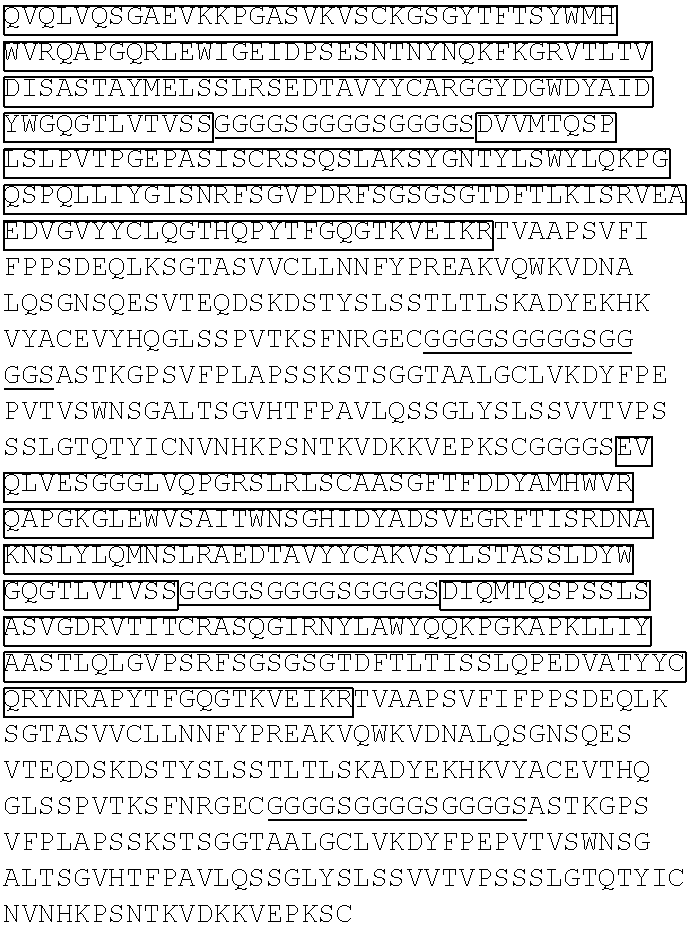

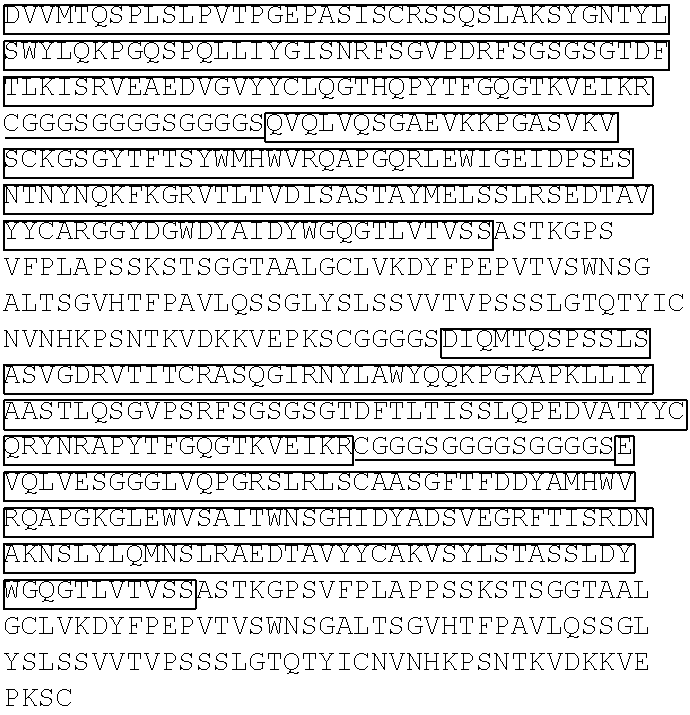
D00000
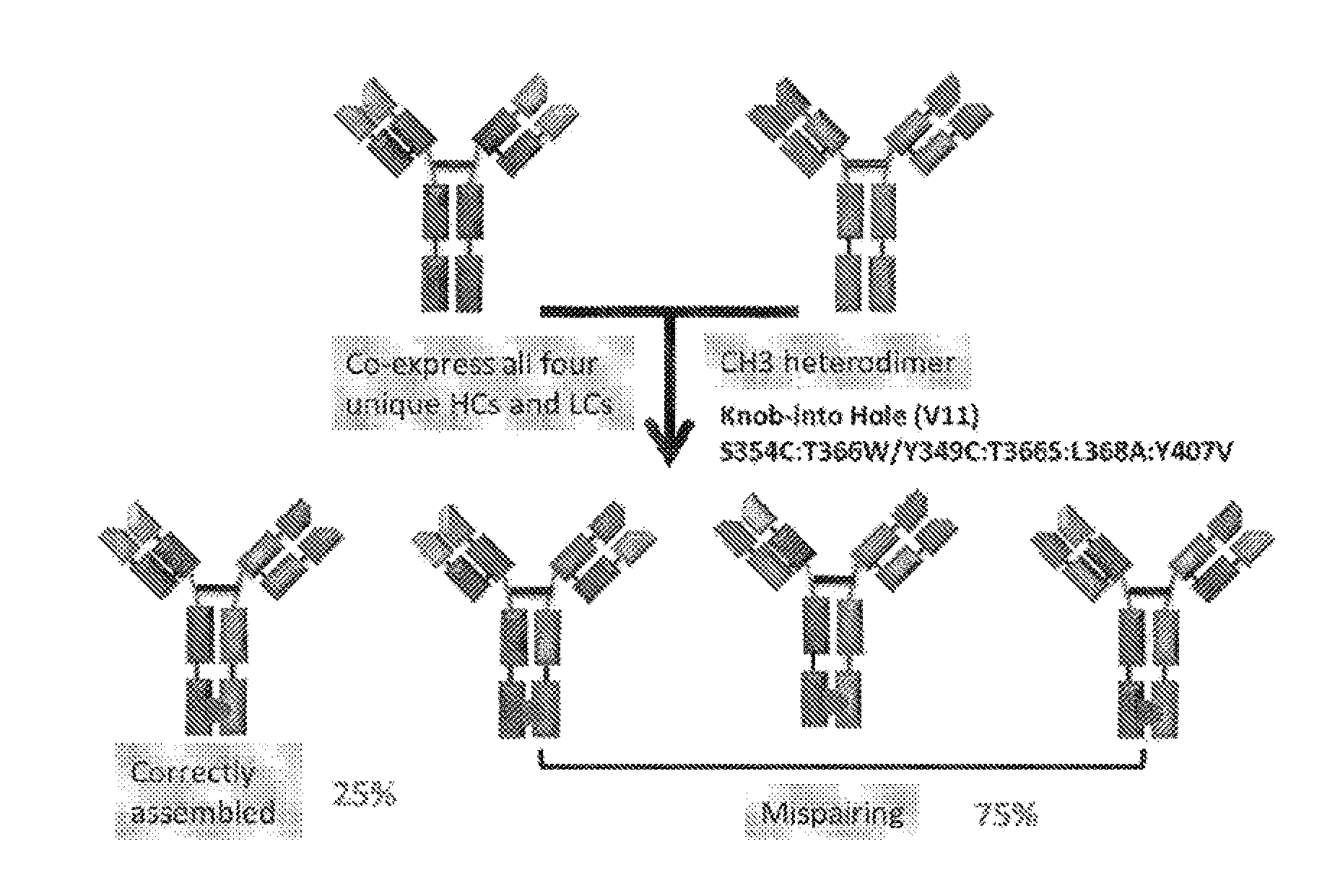
D00001
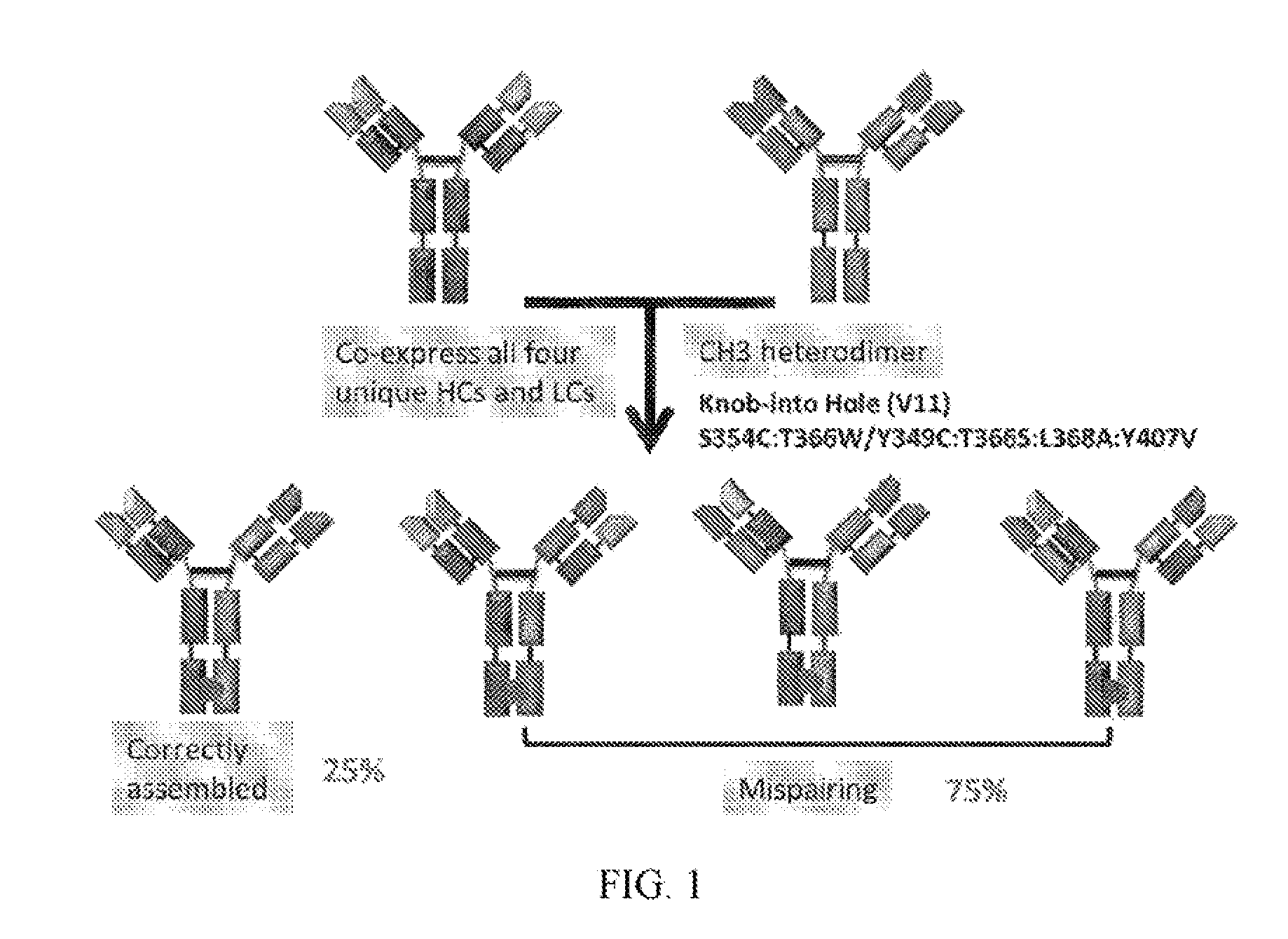
D00002
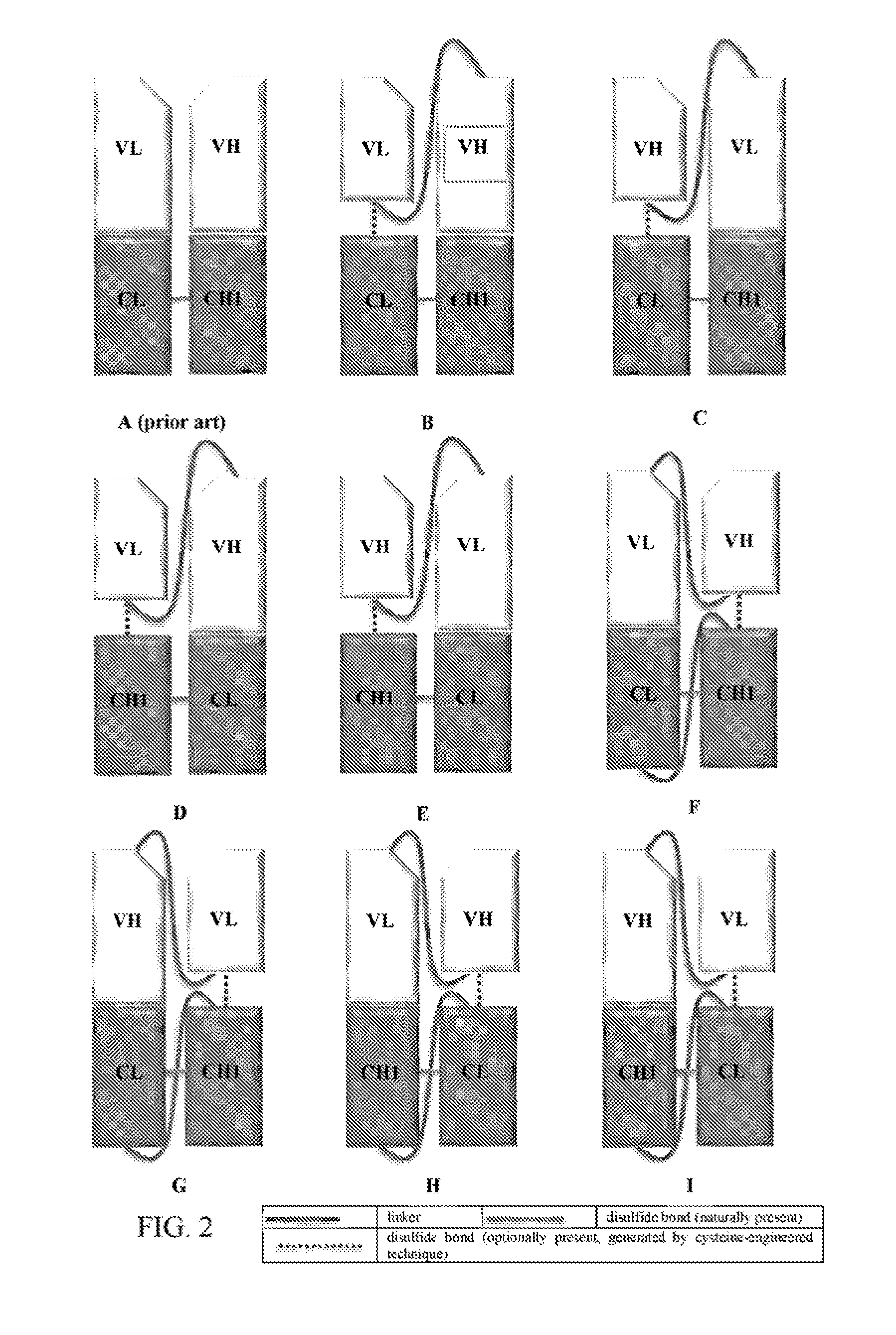
D00003
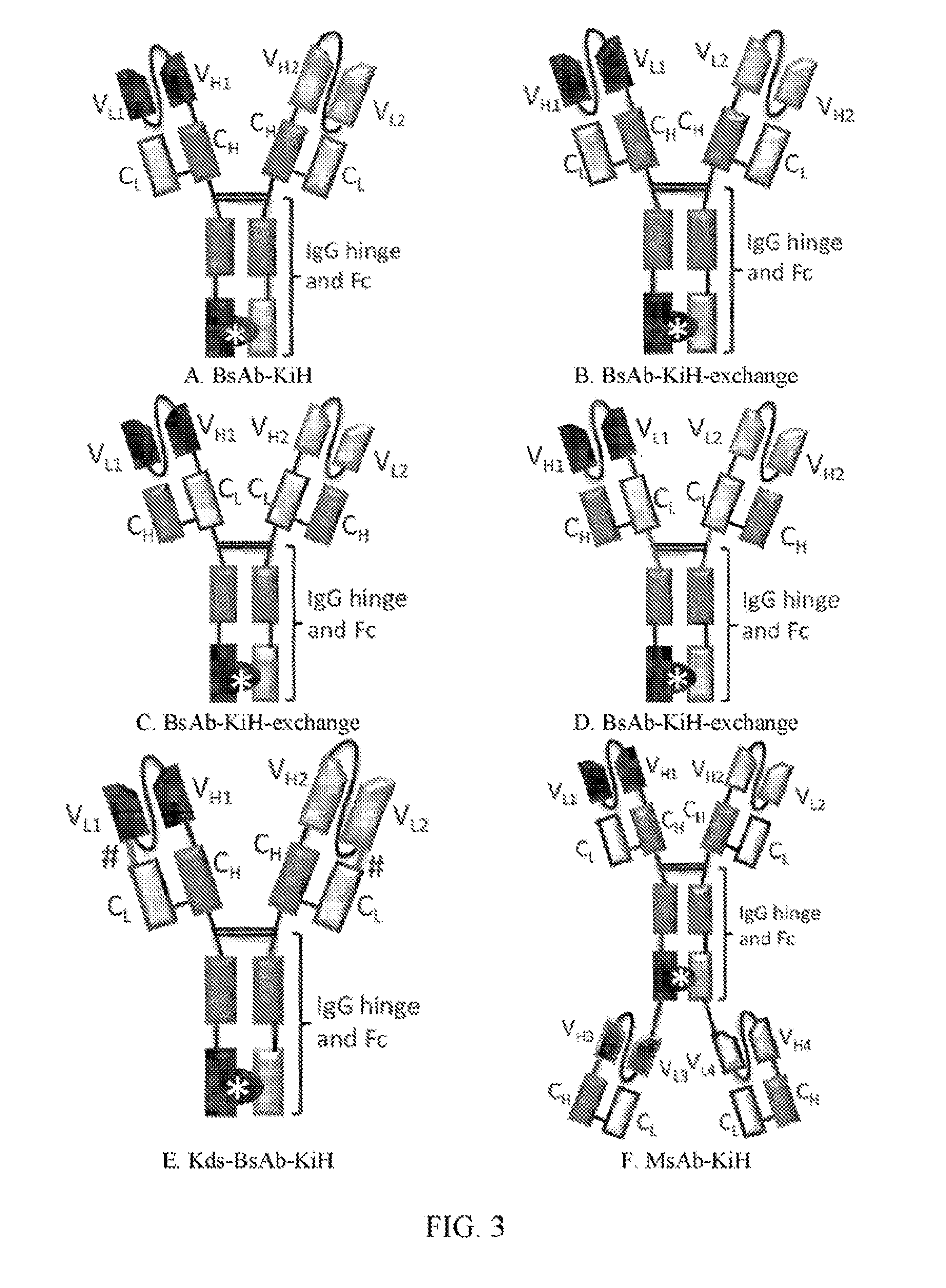
D00004
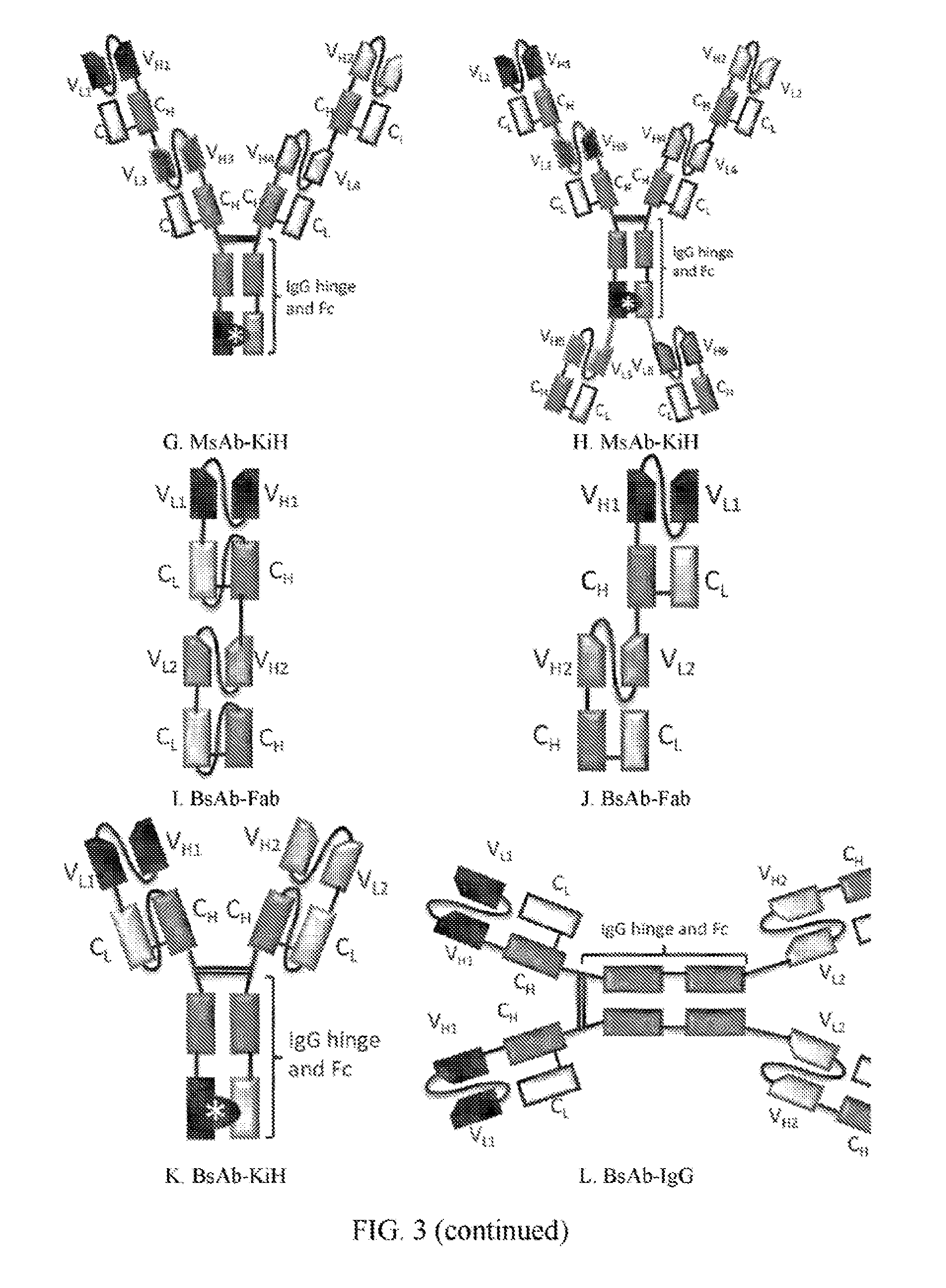
D00005

D00006
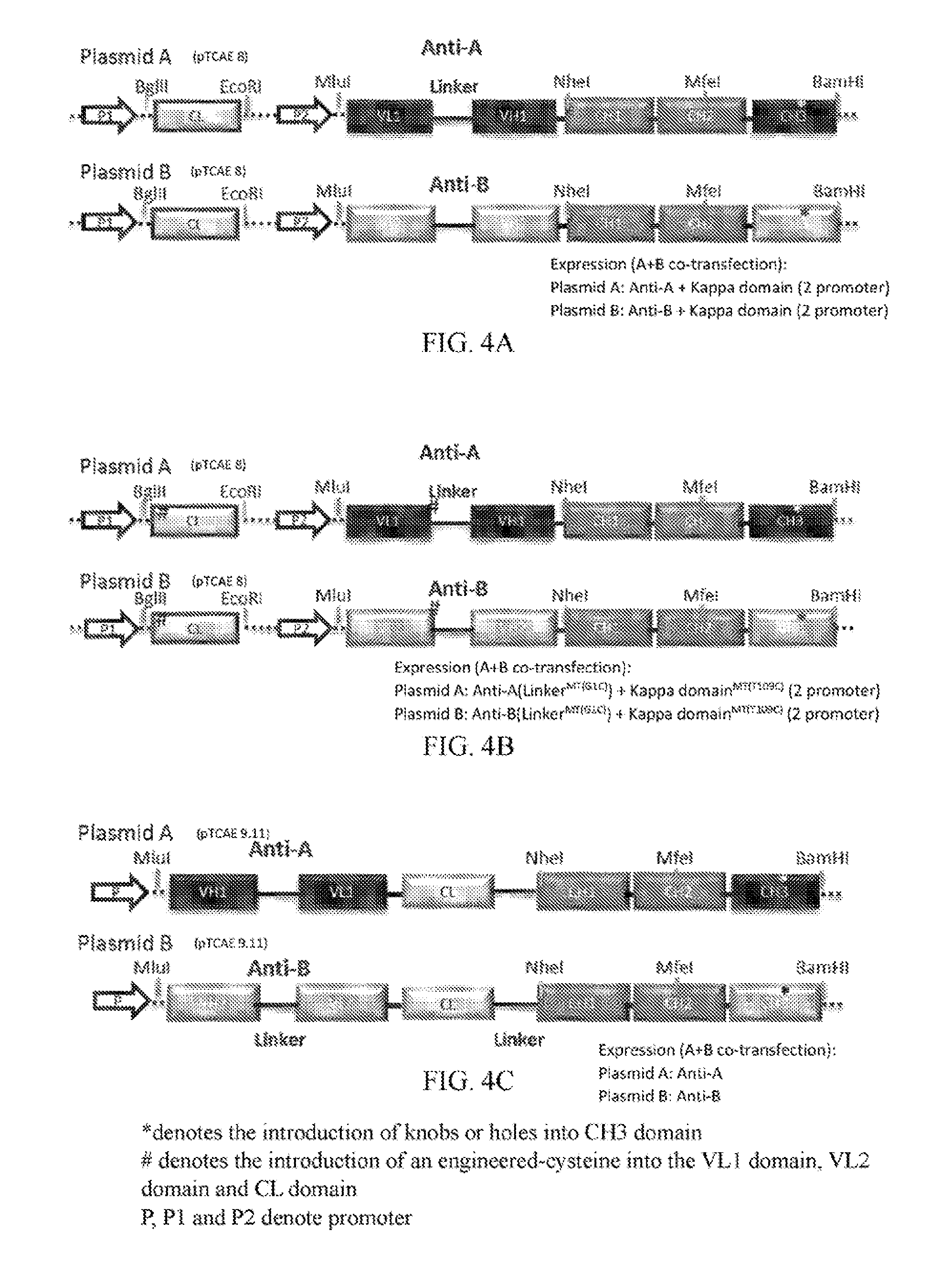
D00007

D00008
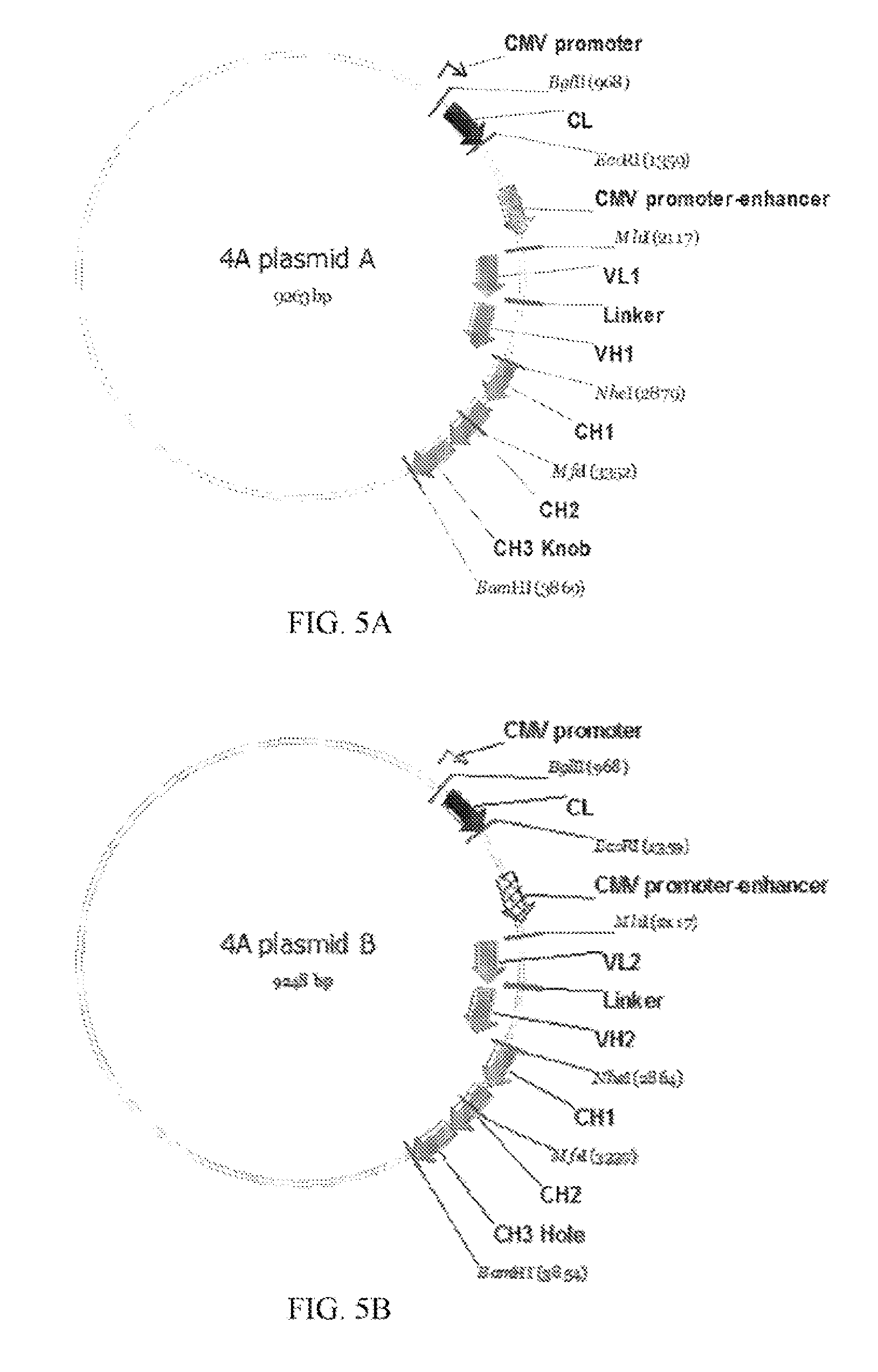
D00009

D00010

D00011

D00012
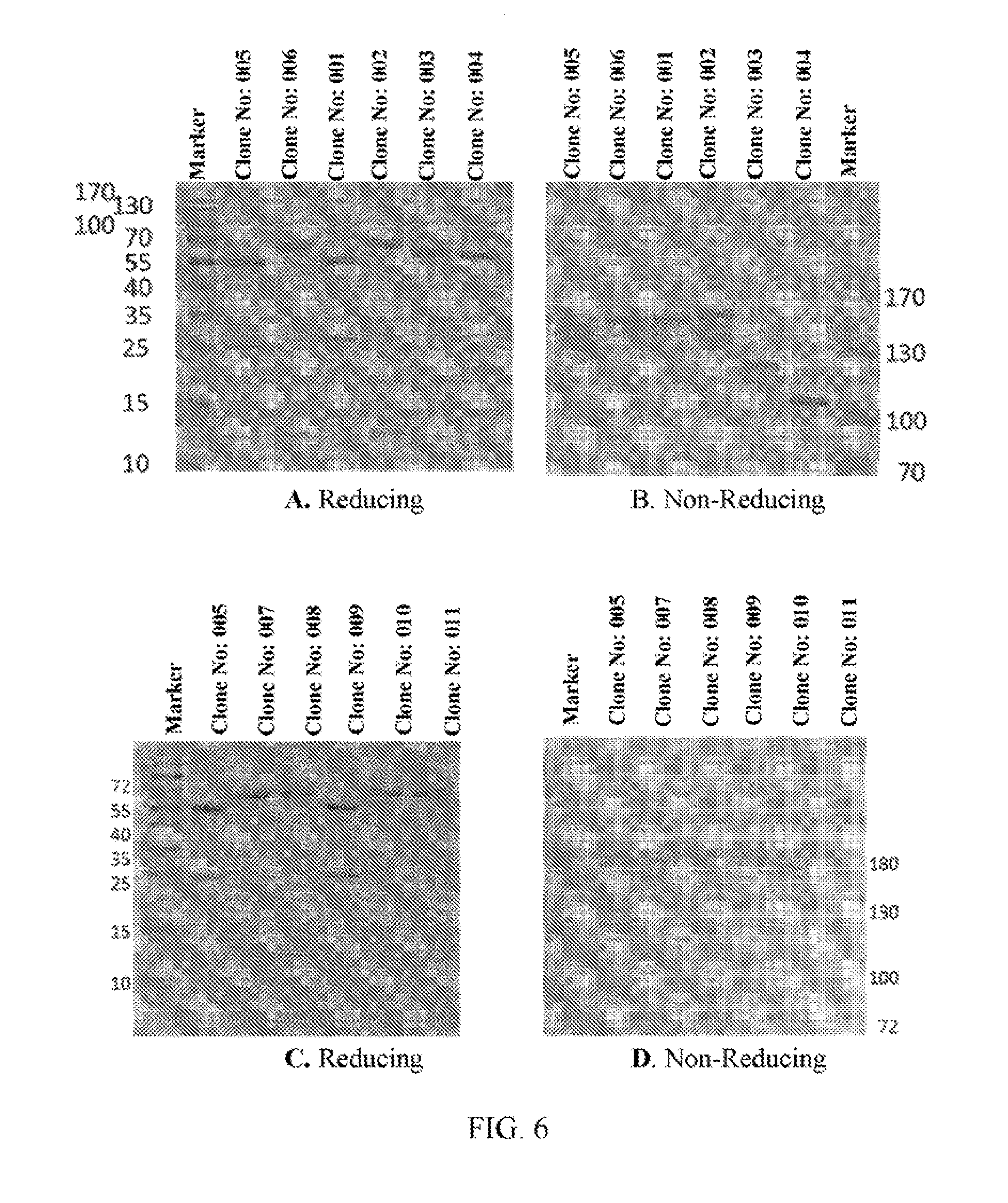
D00013
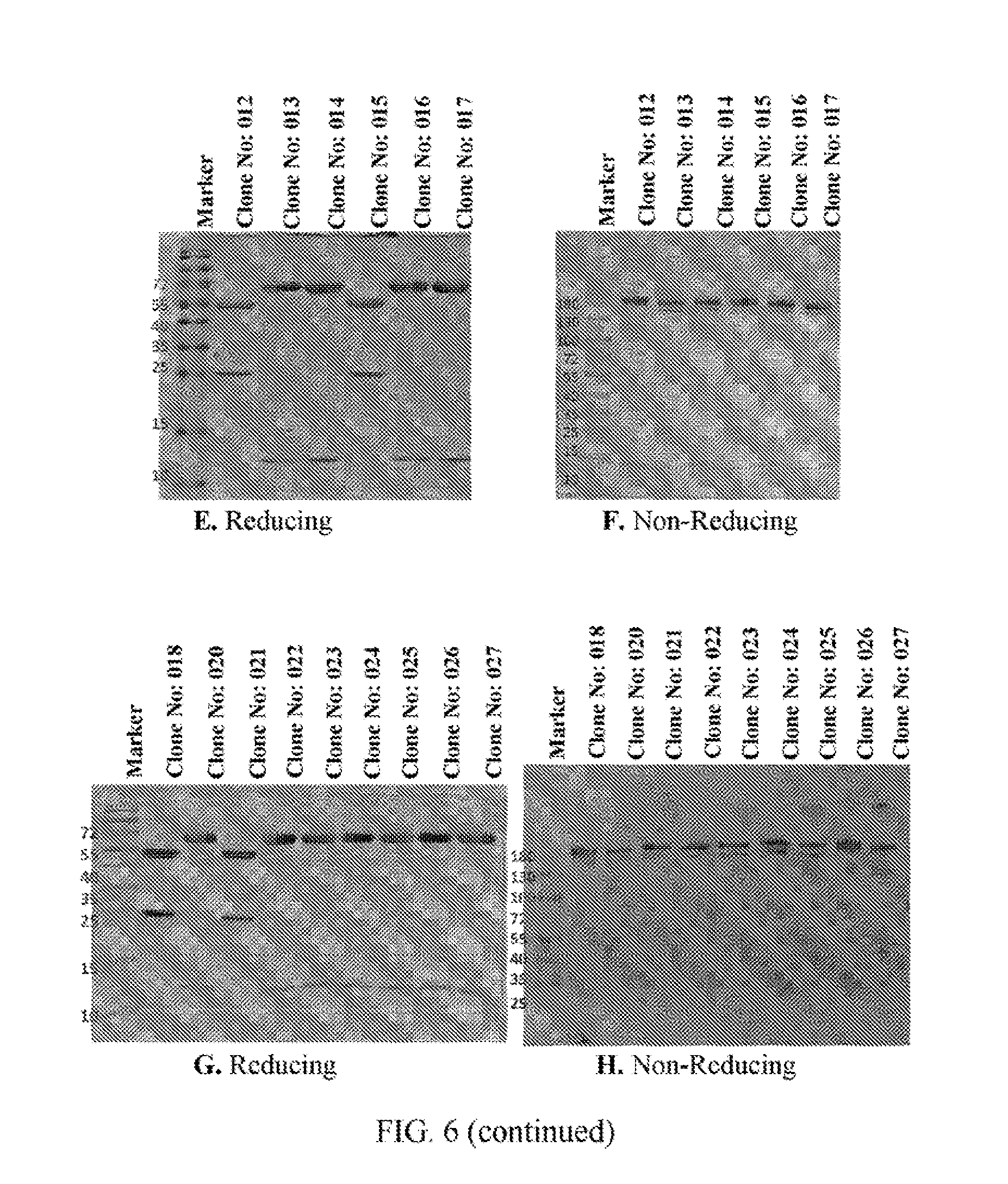
D00014
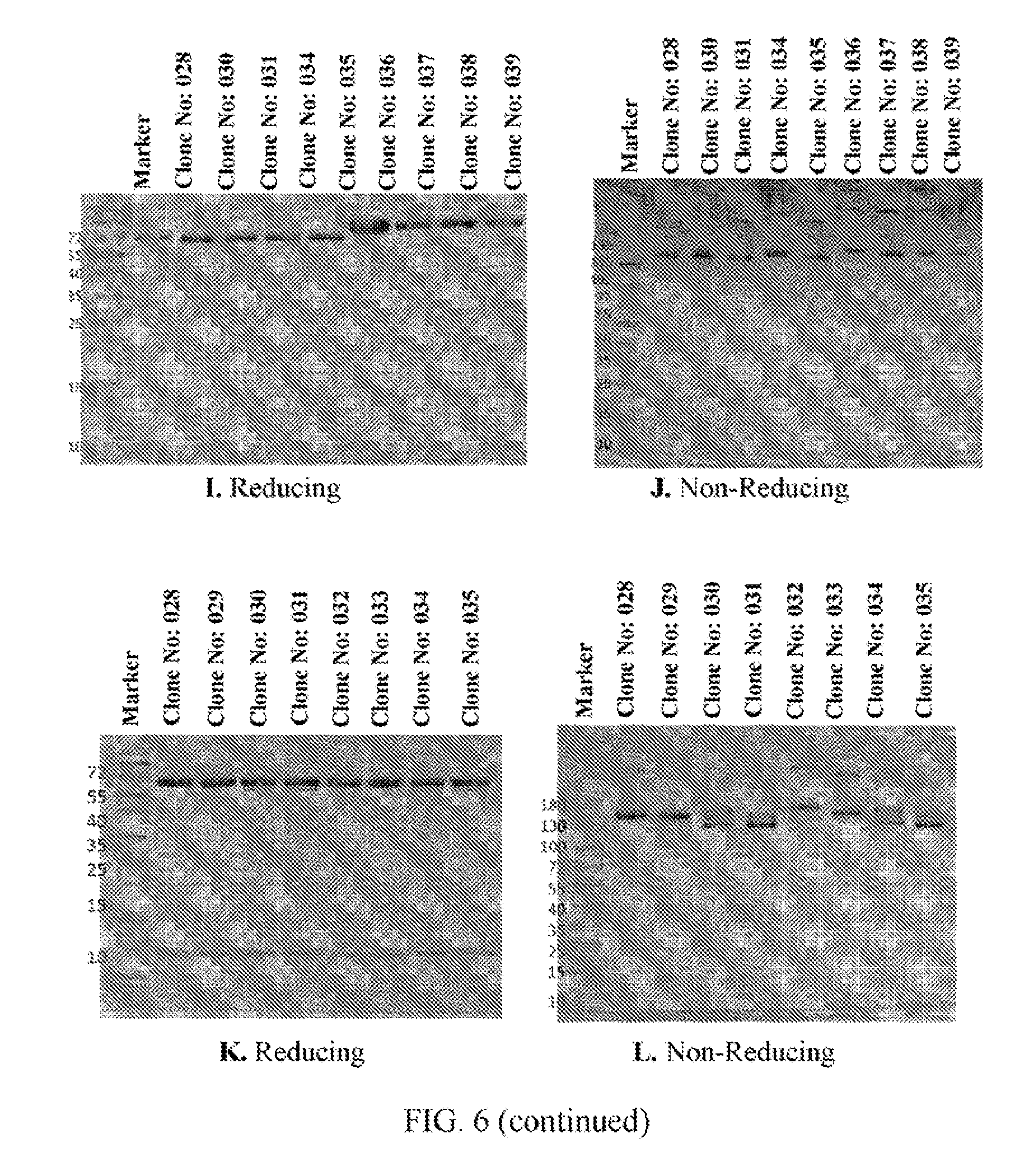
D00015

S00001
XML
uspto.report is an independent third-party trademark research tool that is not affiliated, endorsed, or sponsored by the United States Patent and Trademark Office (USPTO) or any other governmental organization. The information provided by uspto.report is based on publicly available data at the time of writing and is intended for informational purposes only.
While we strive to provide accurate and up-to-date information, we do not guarantee the accuracy, completeness, reliability, or suitability of the information displayed on this site. The use of this site is at your own risk. Any reliance you place on such information is therefore strictly at your own risk.
All official trademark data, including owner information, should be verified by visiting the official USPTO website at www.uspto.gov. This site is not intended to replace professional legal advice and should not be used as a substitute for consulting with a legal professional who is knowledgeable about trademark law.